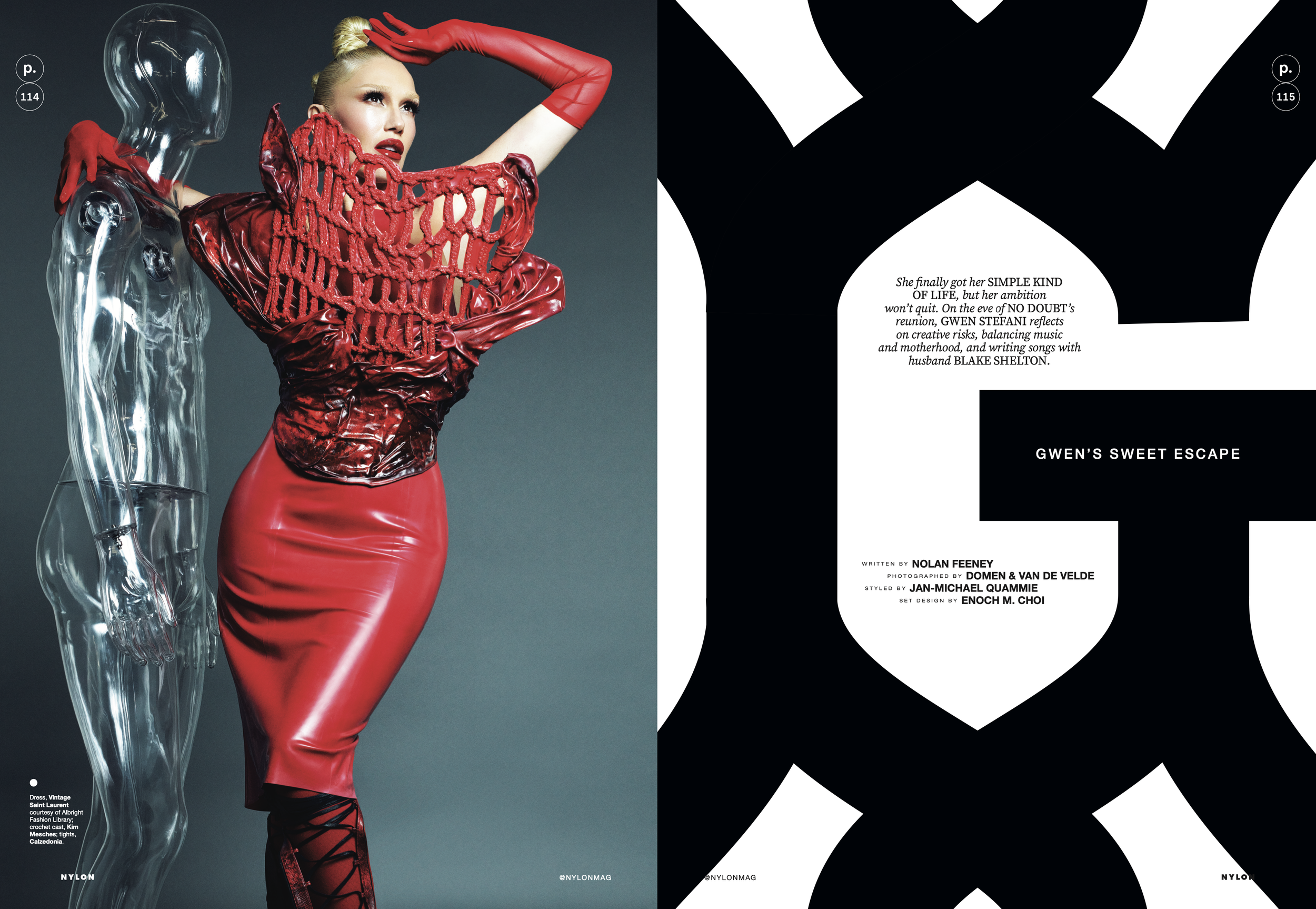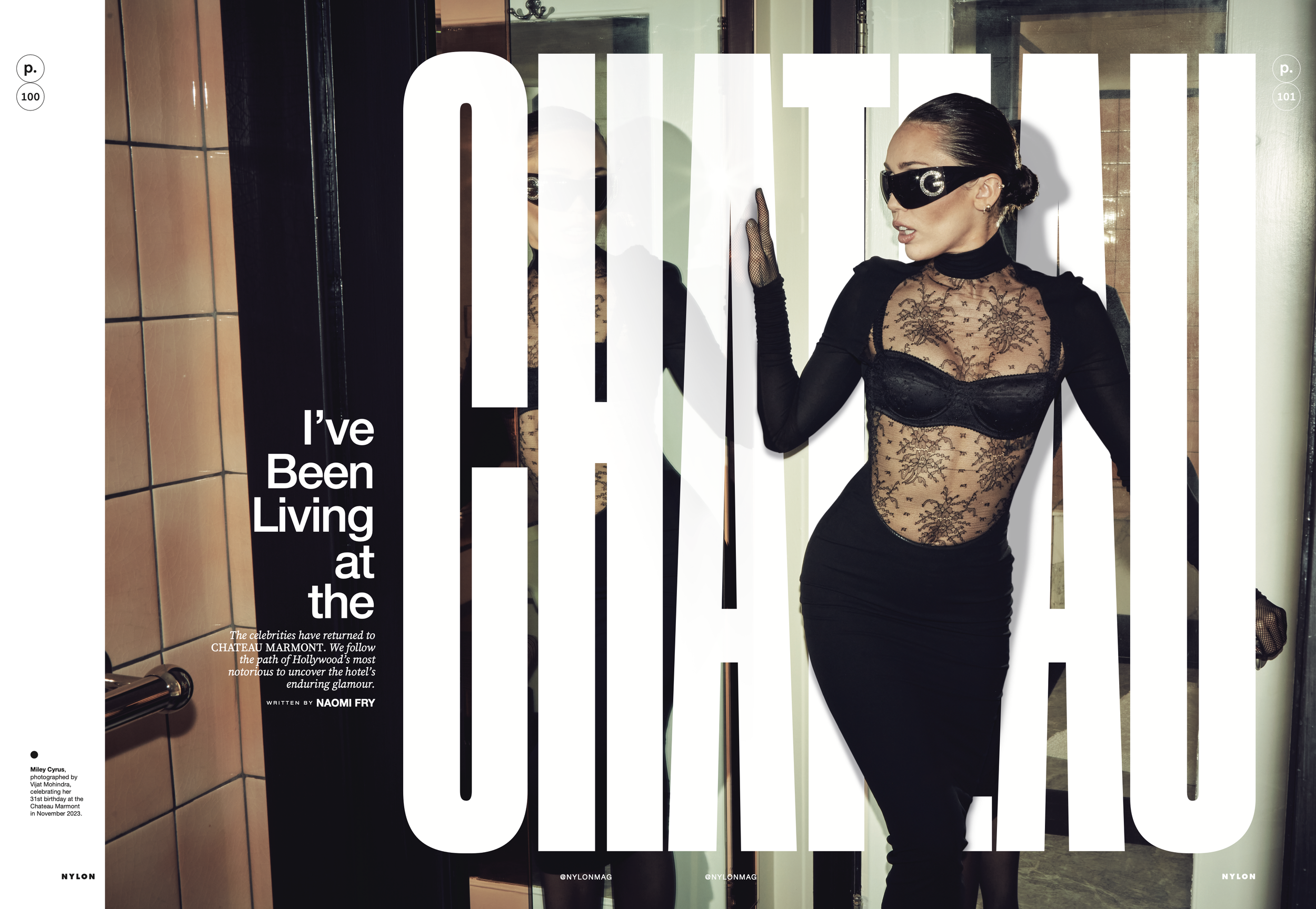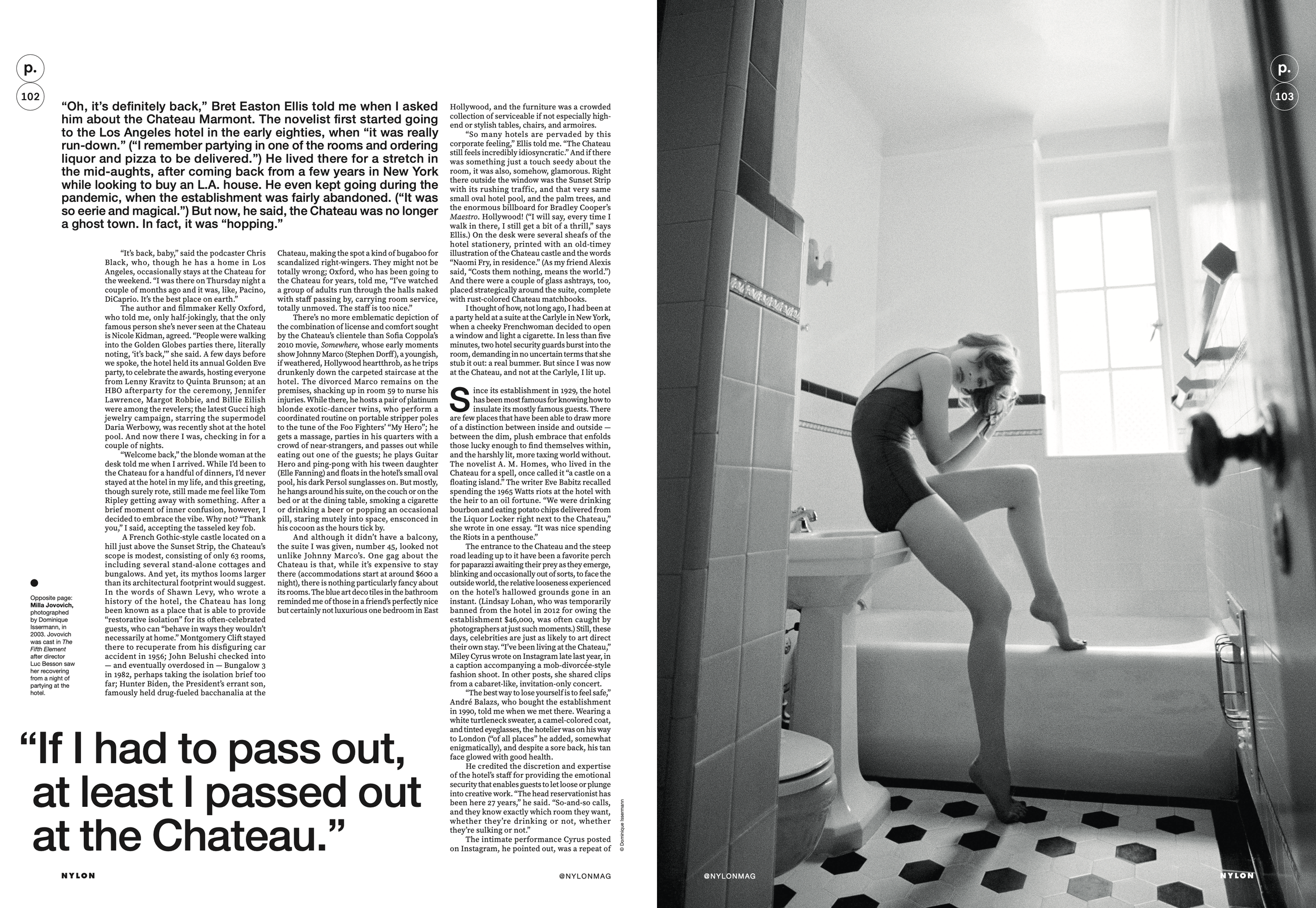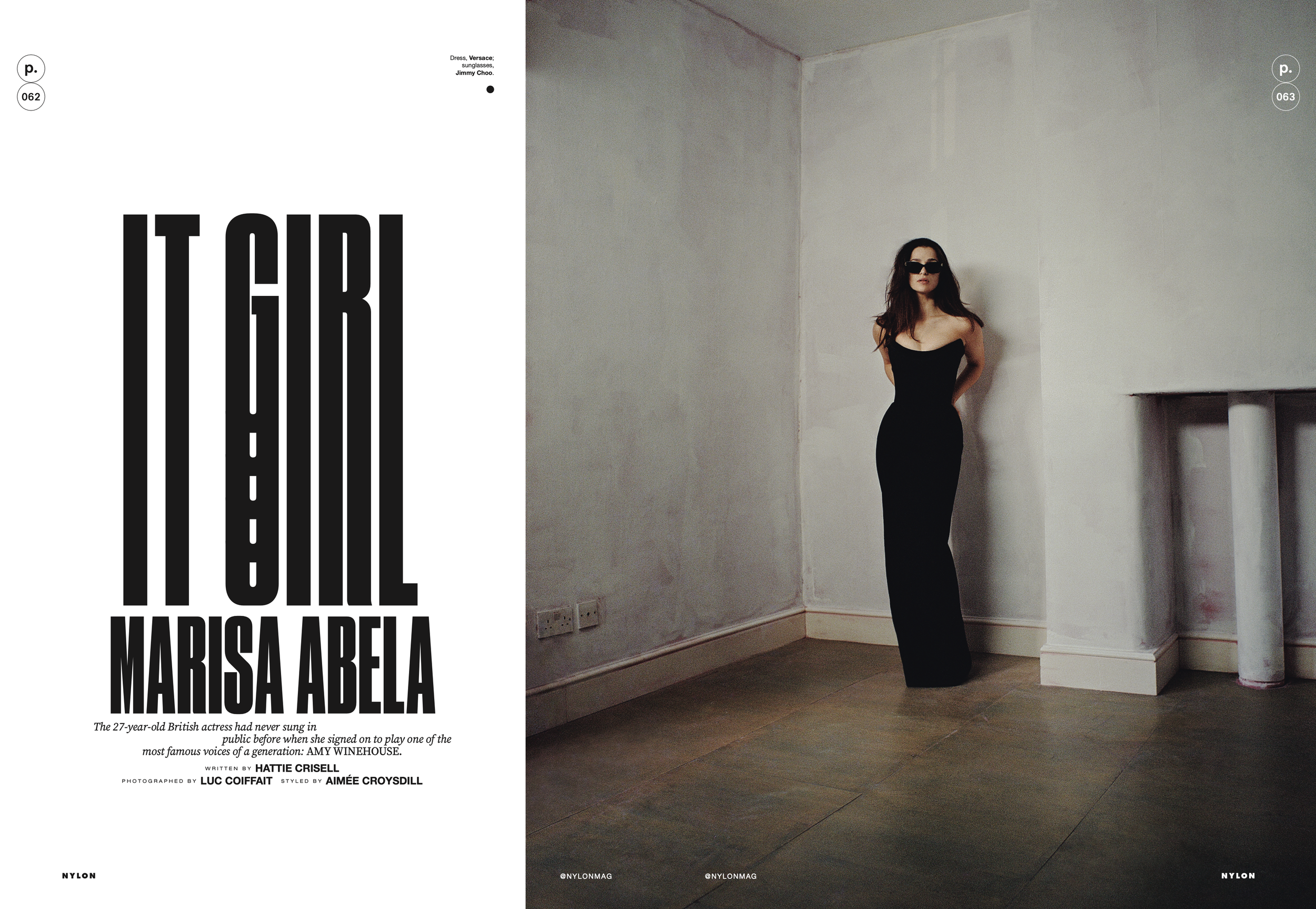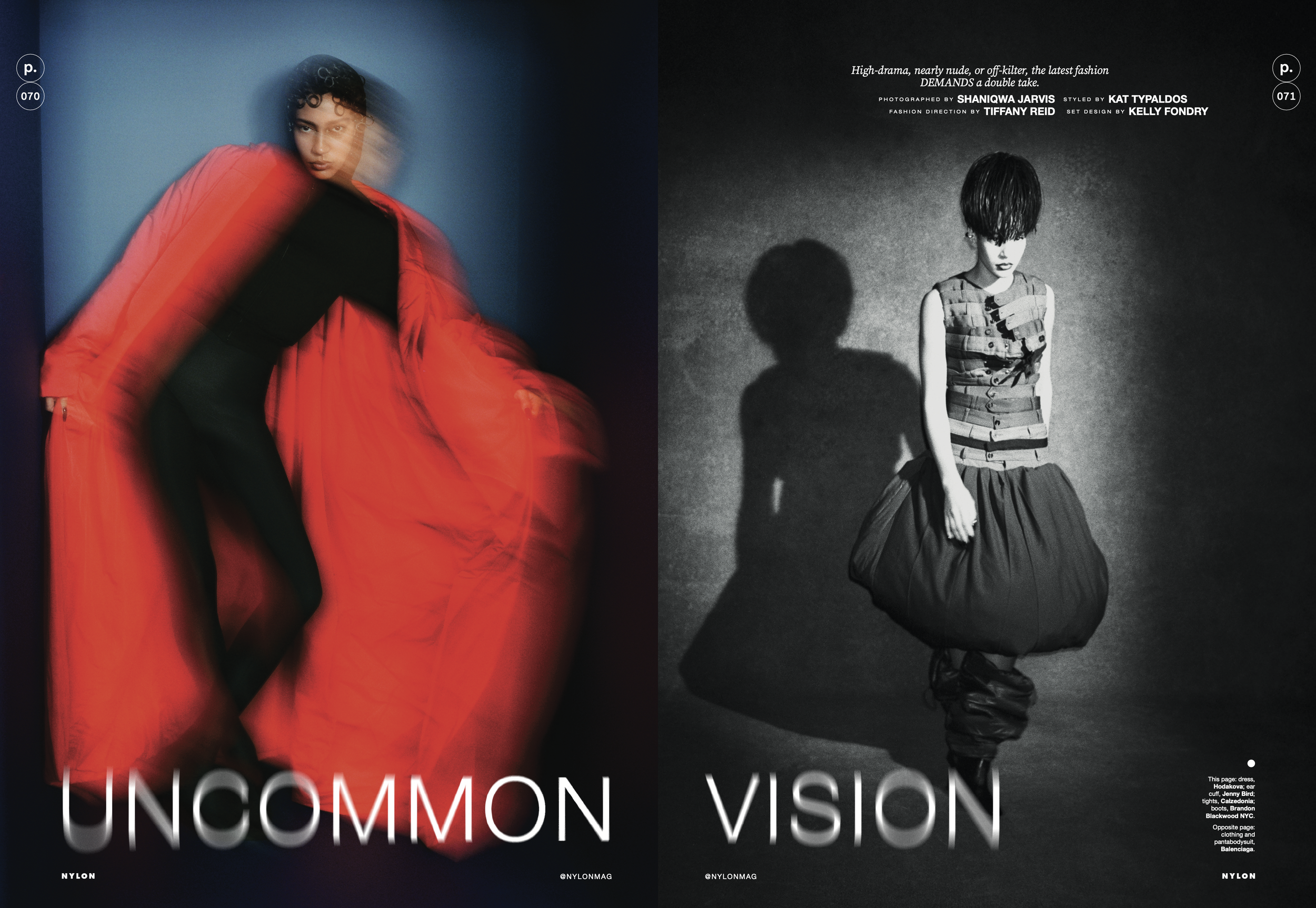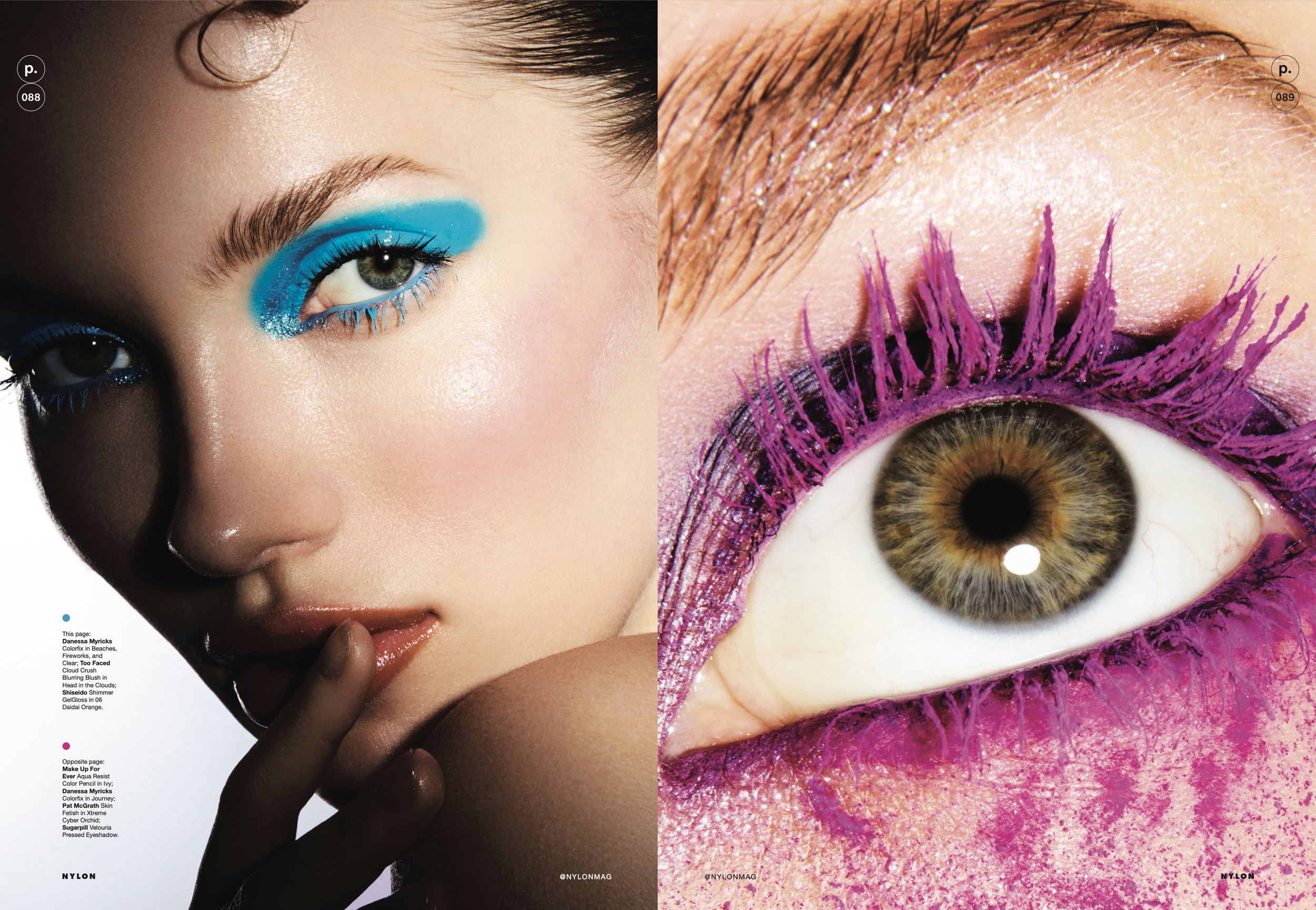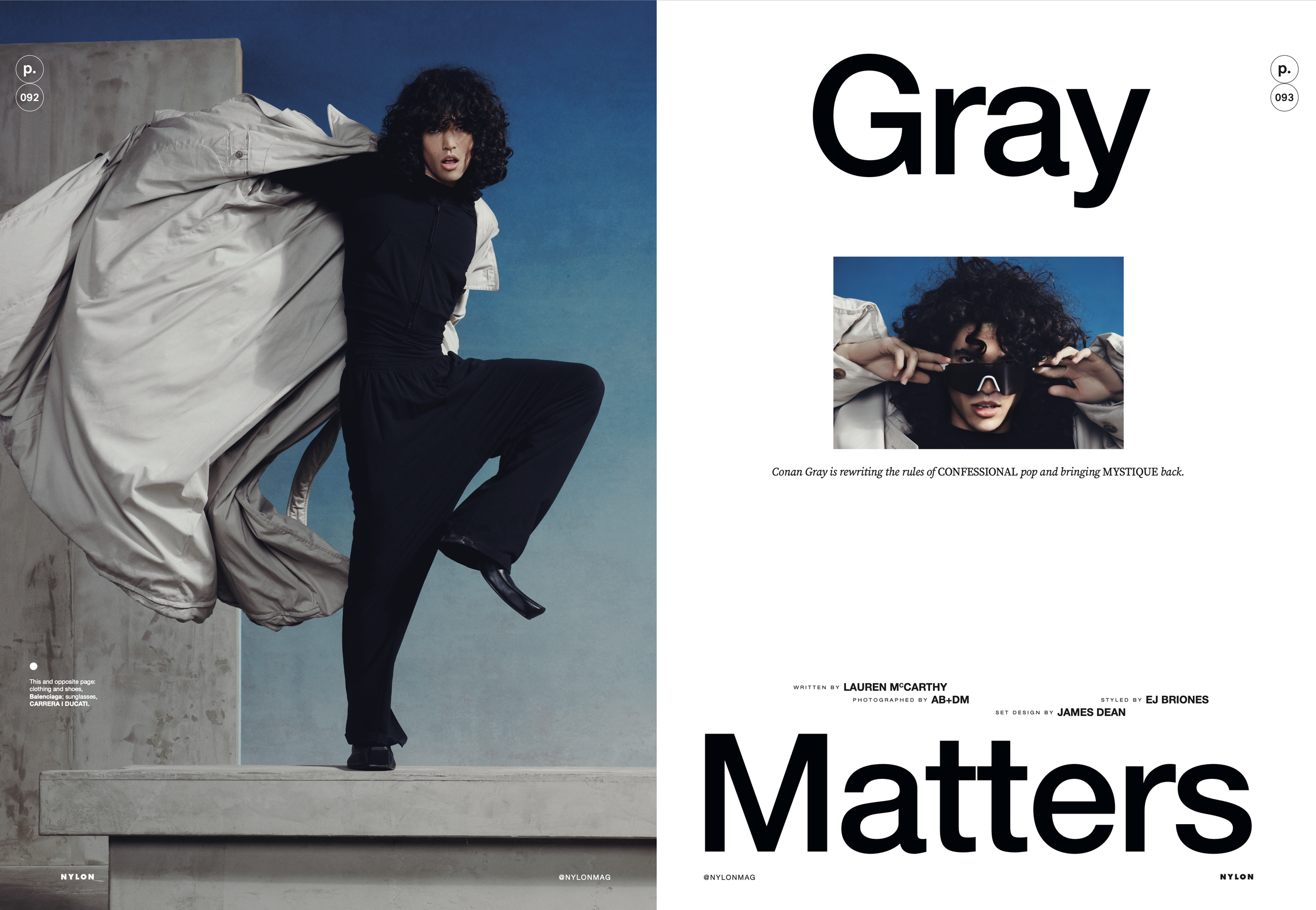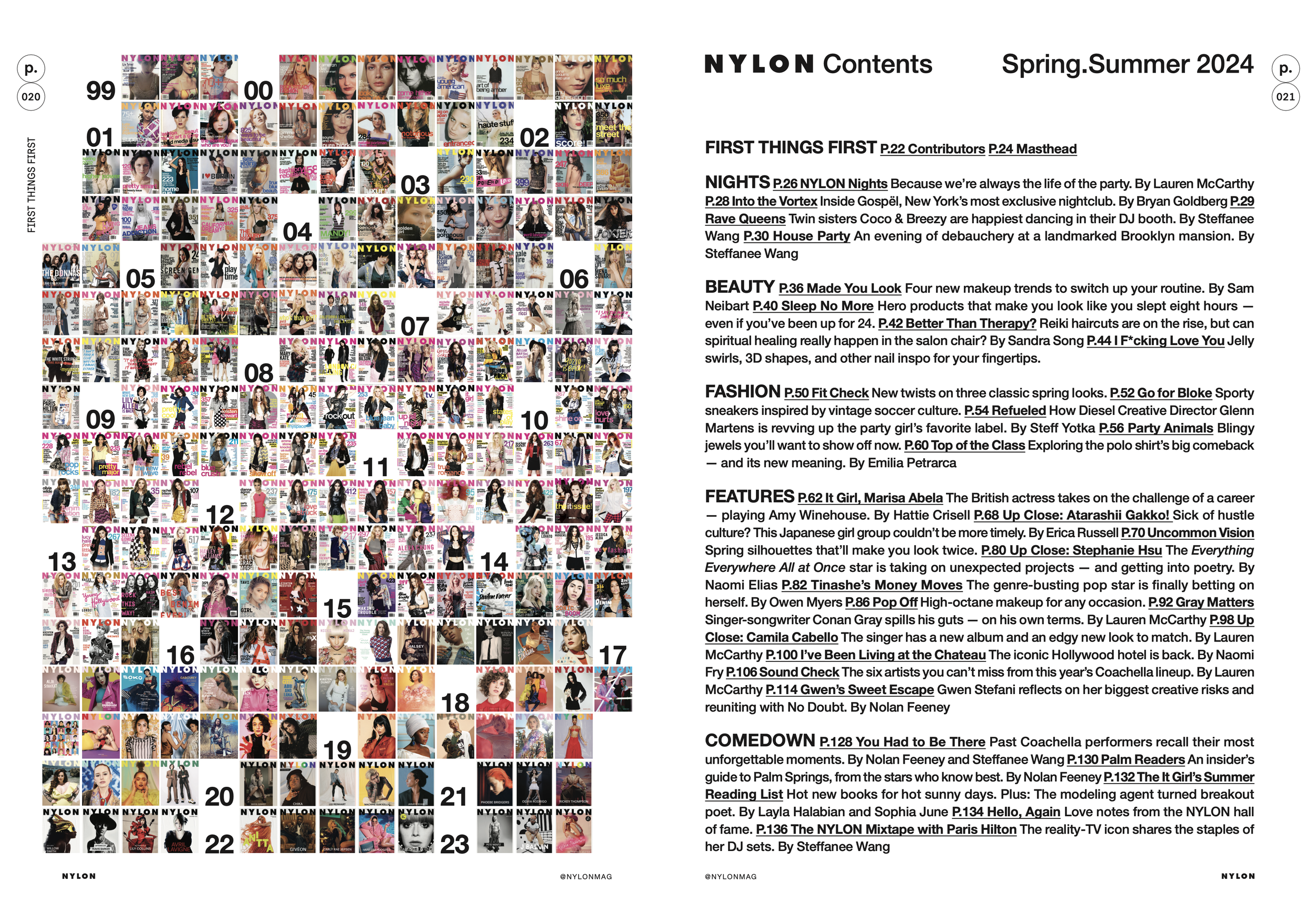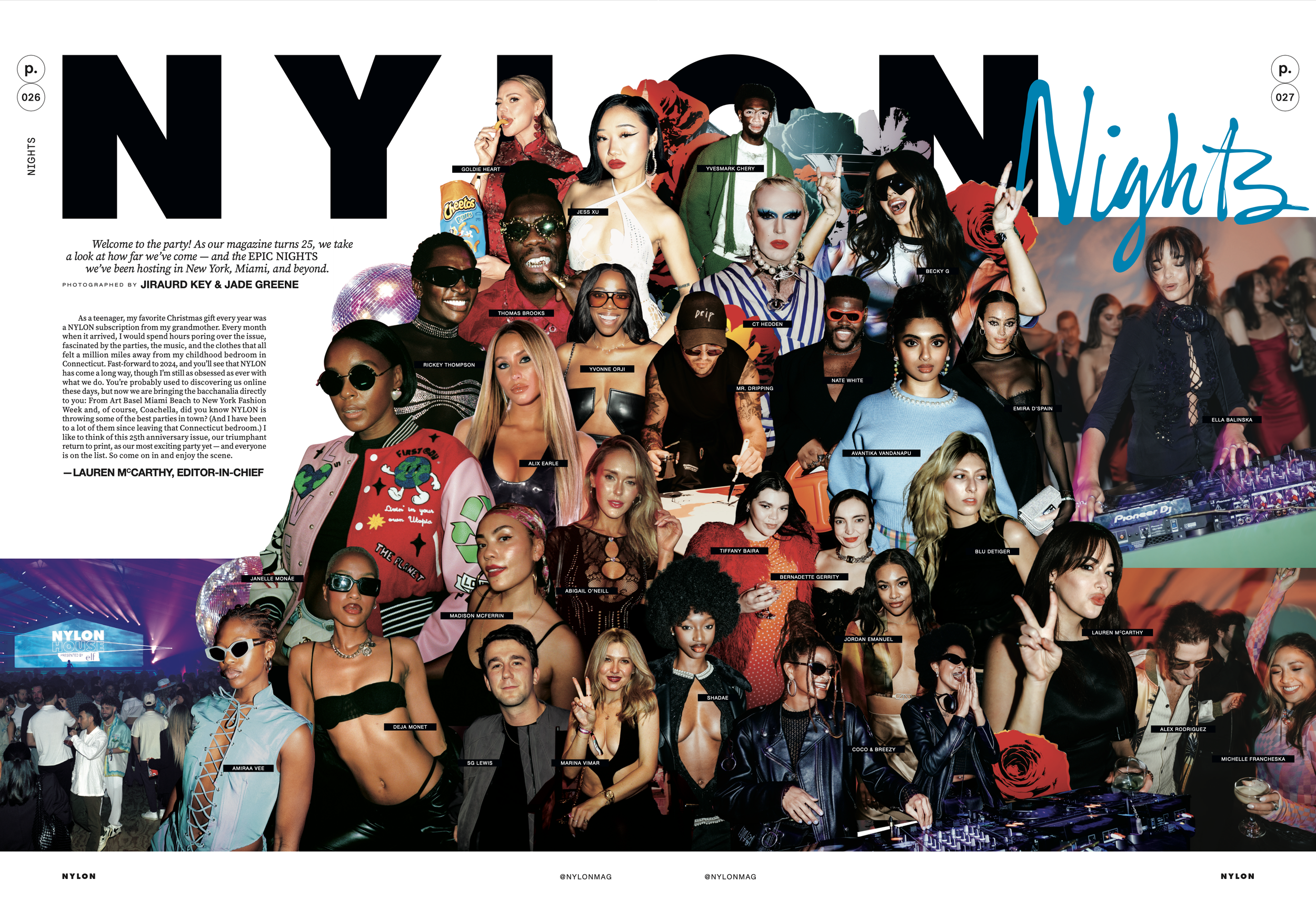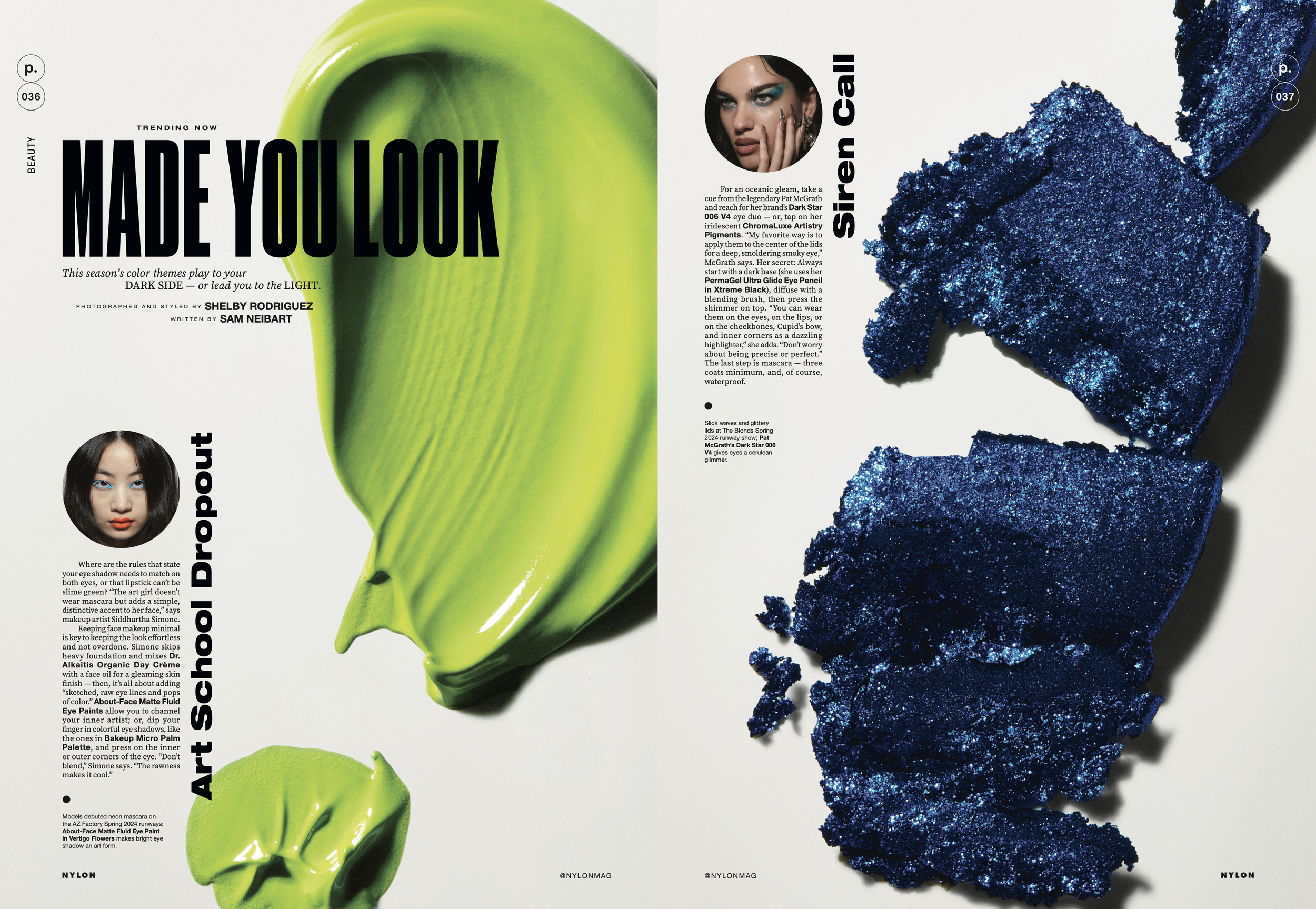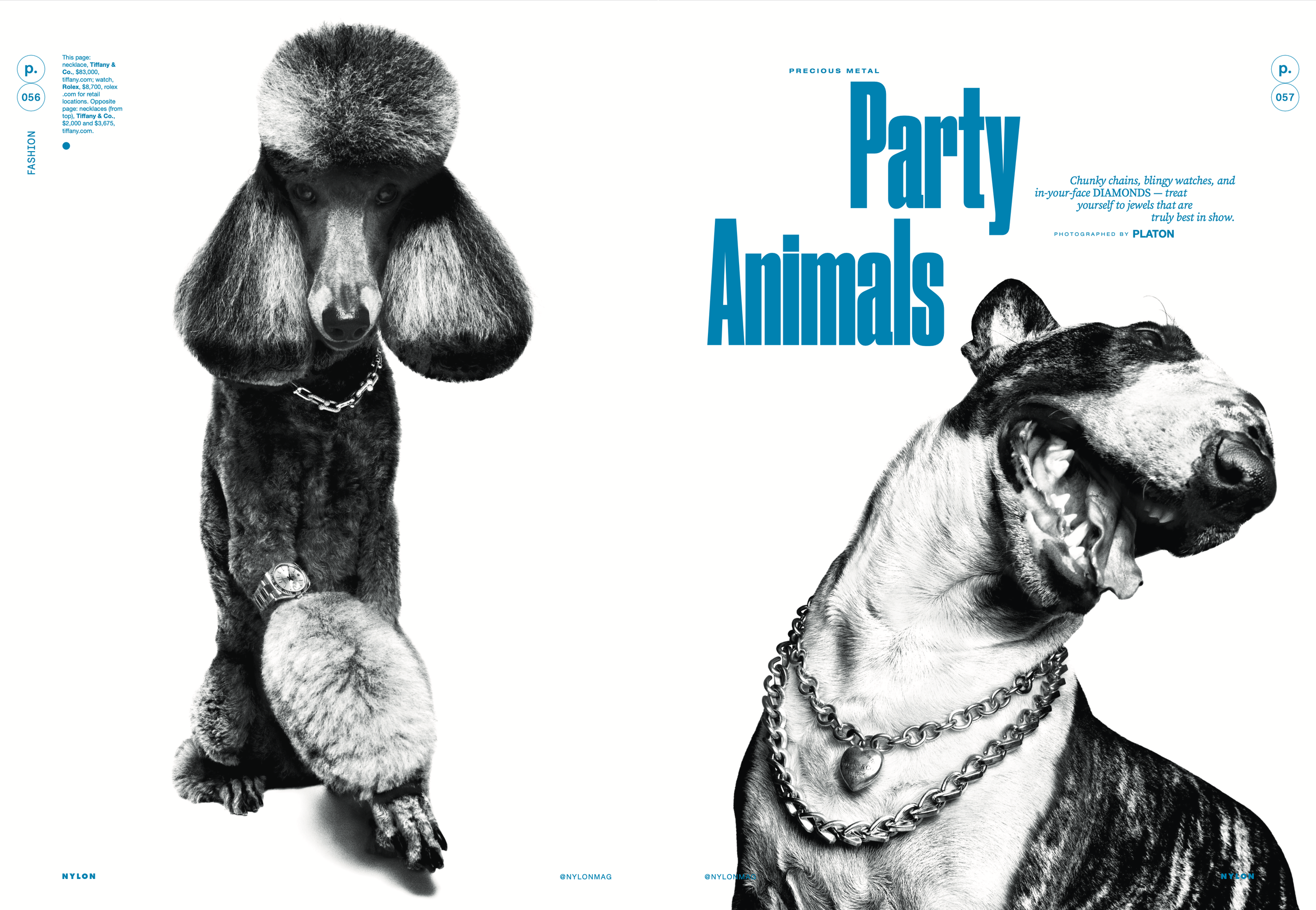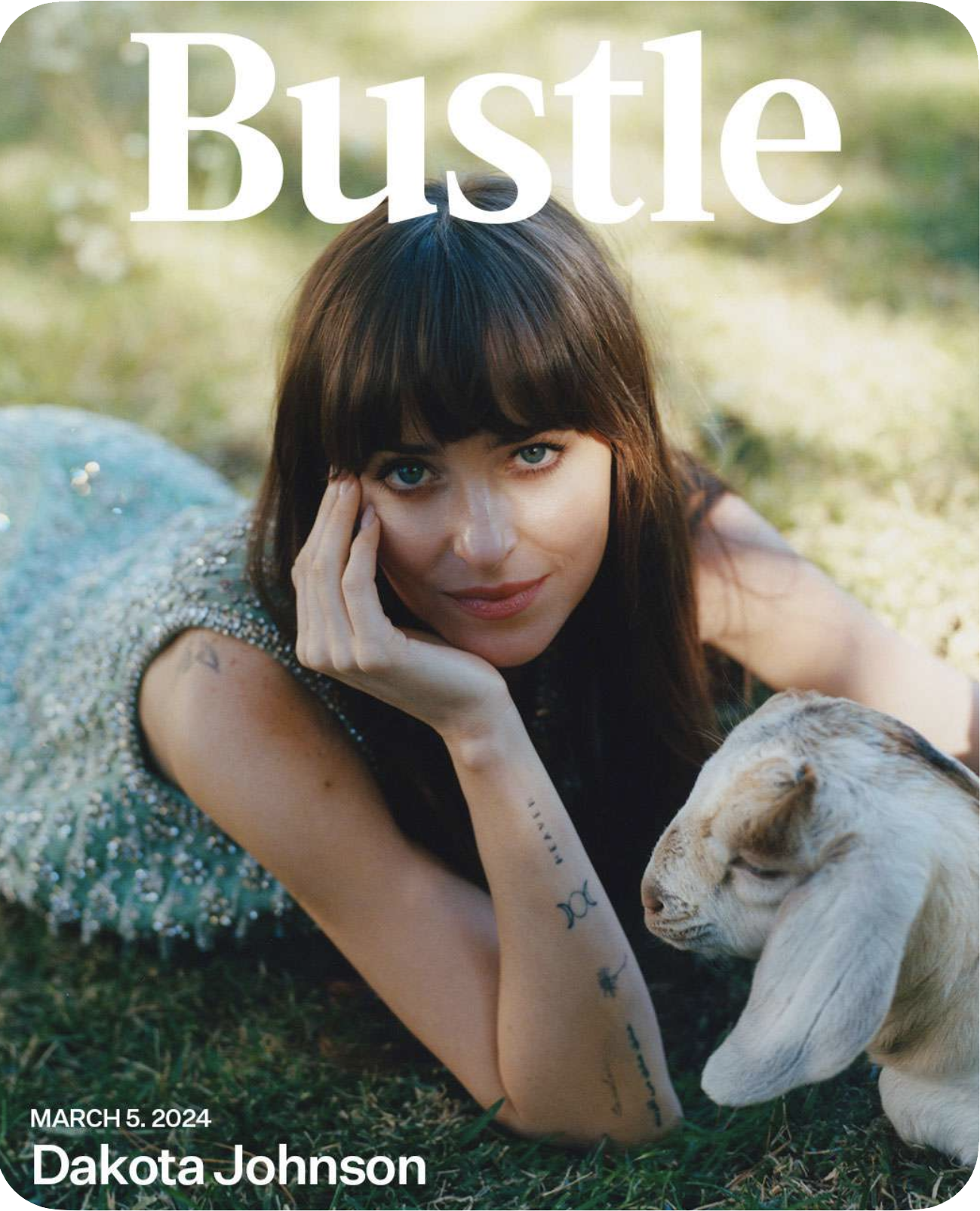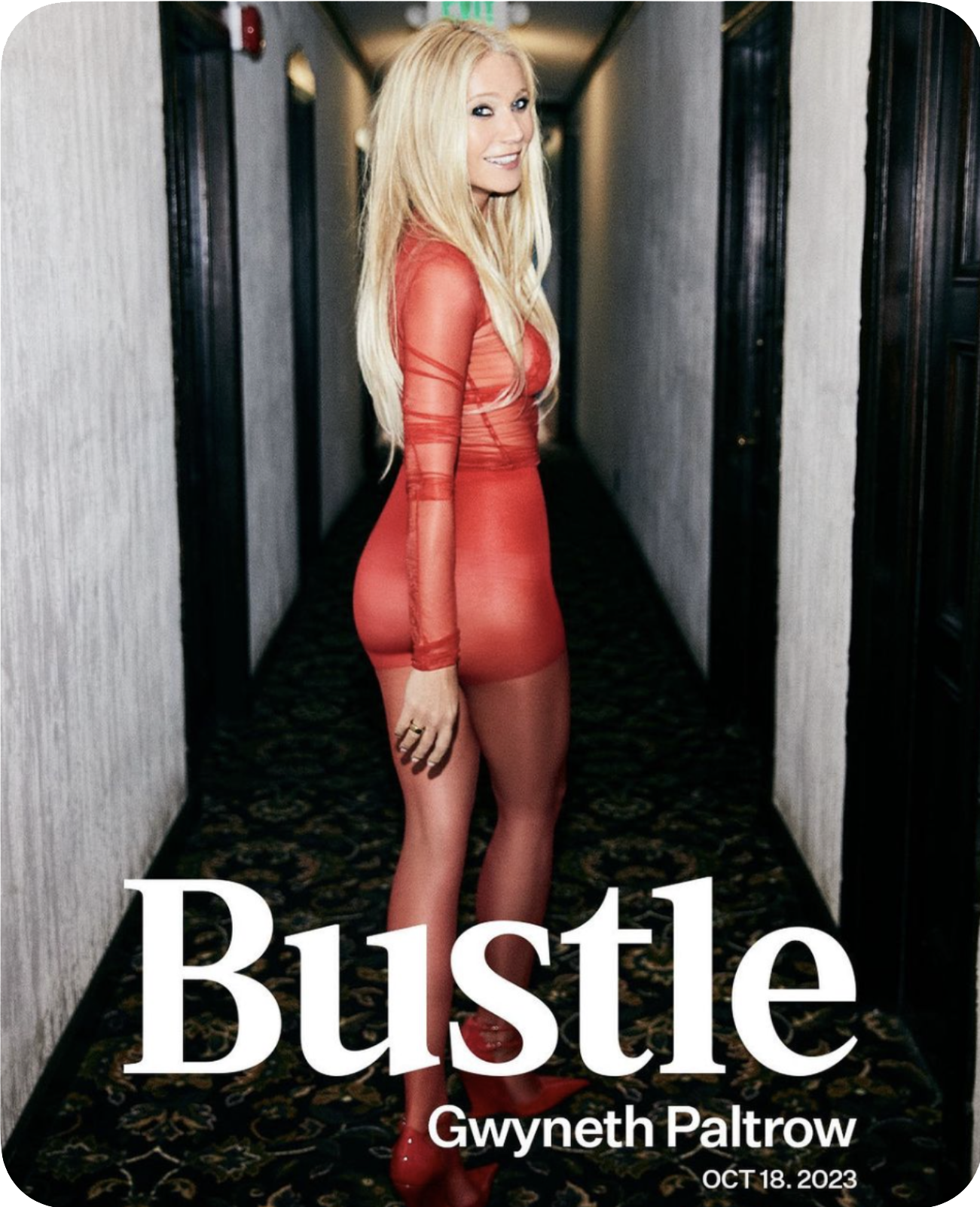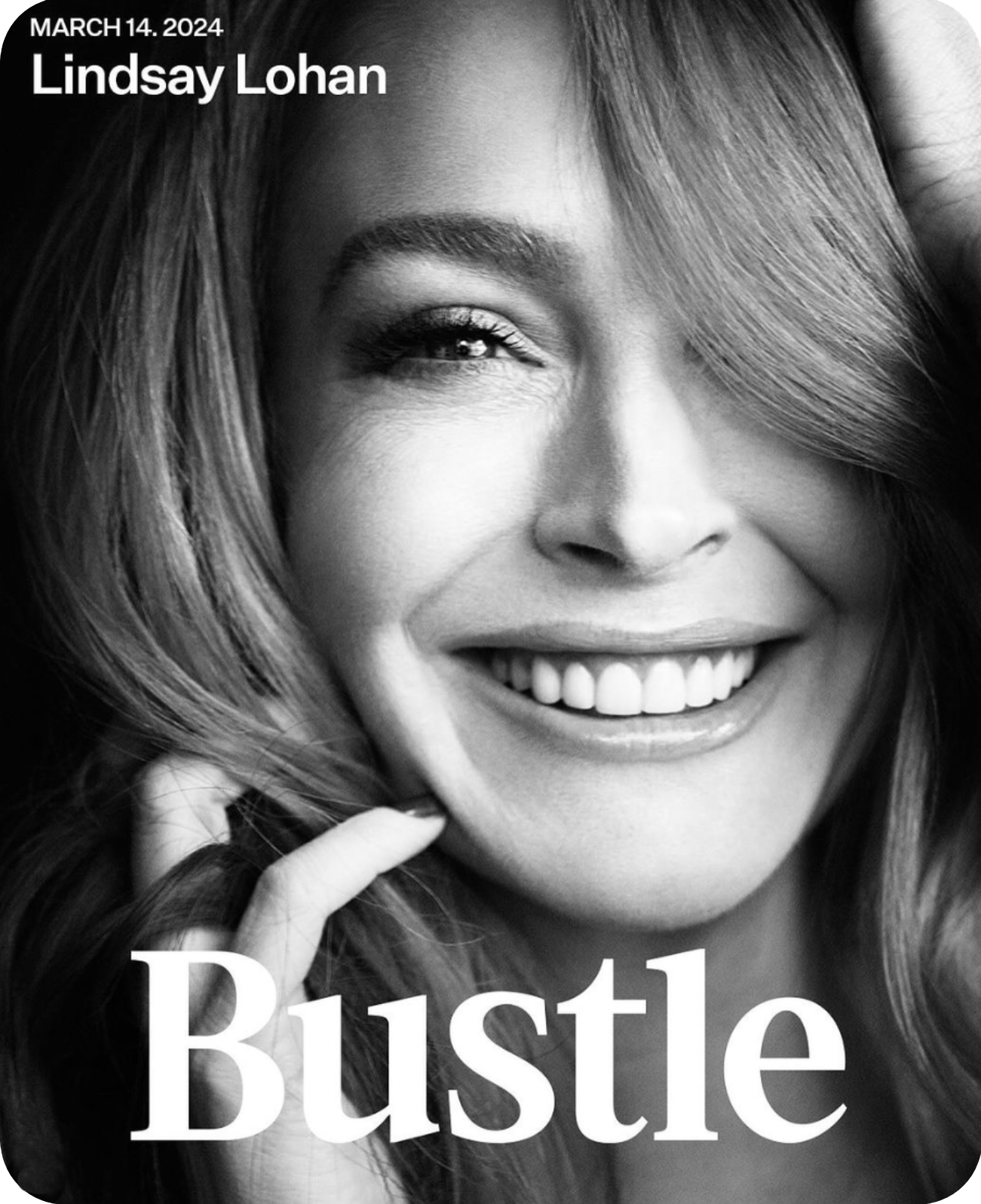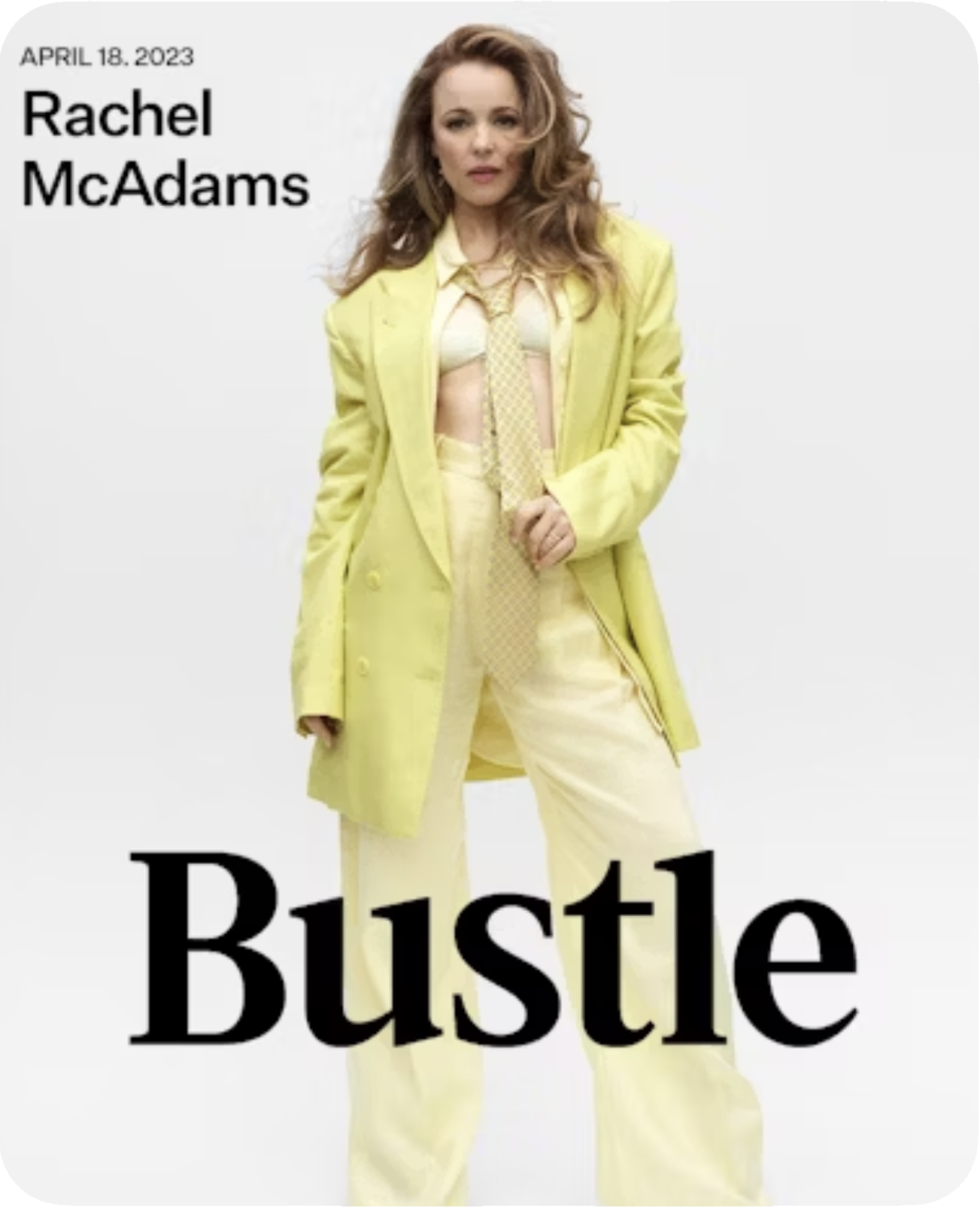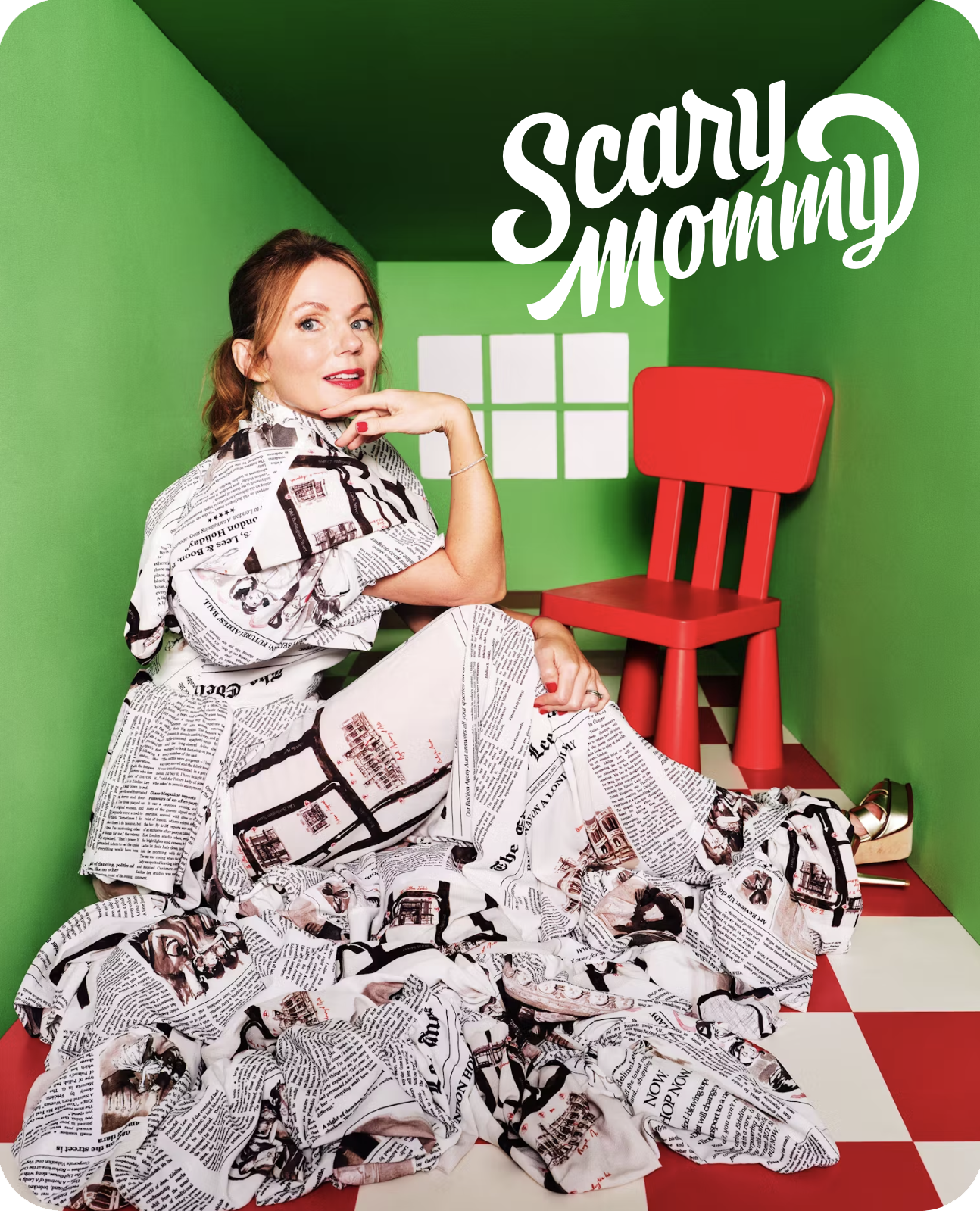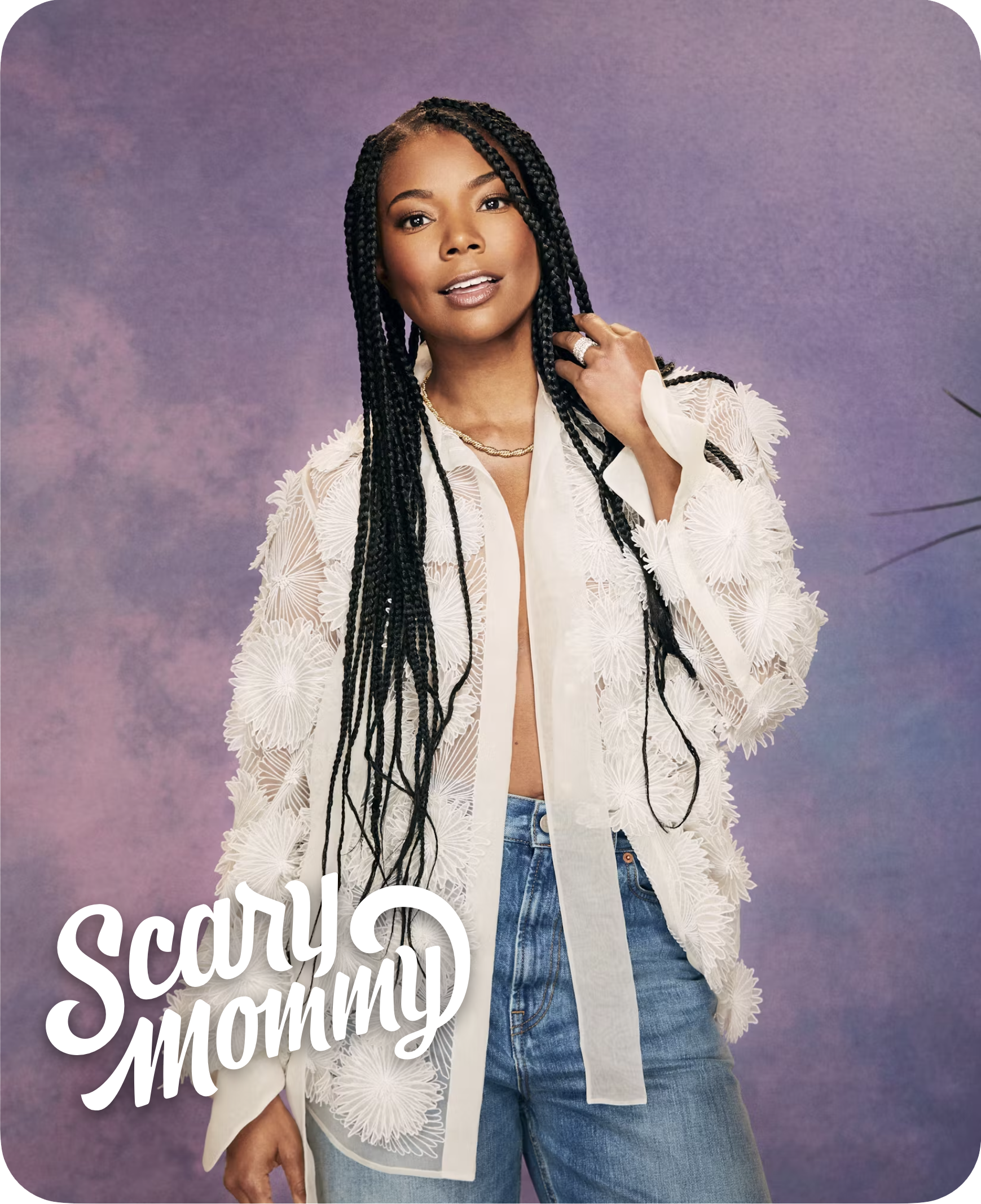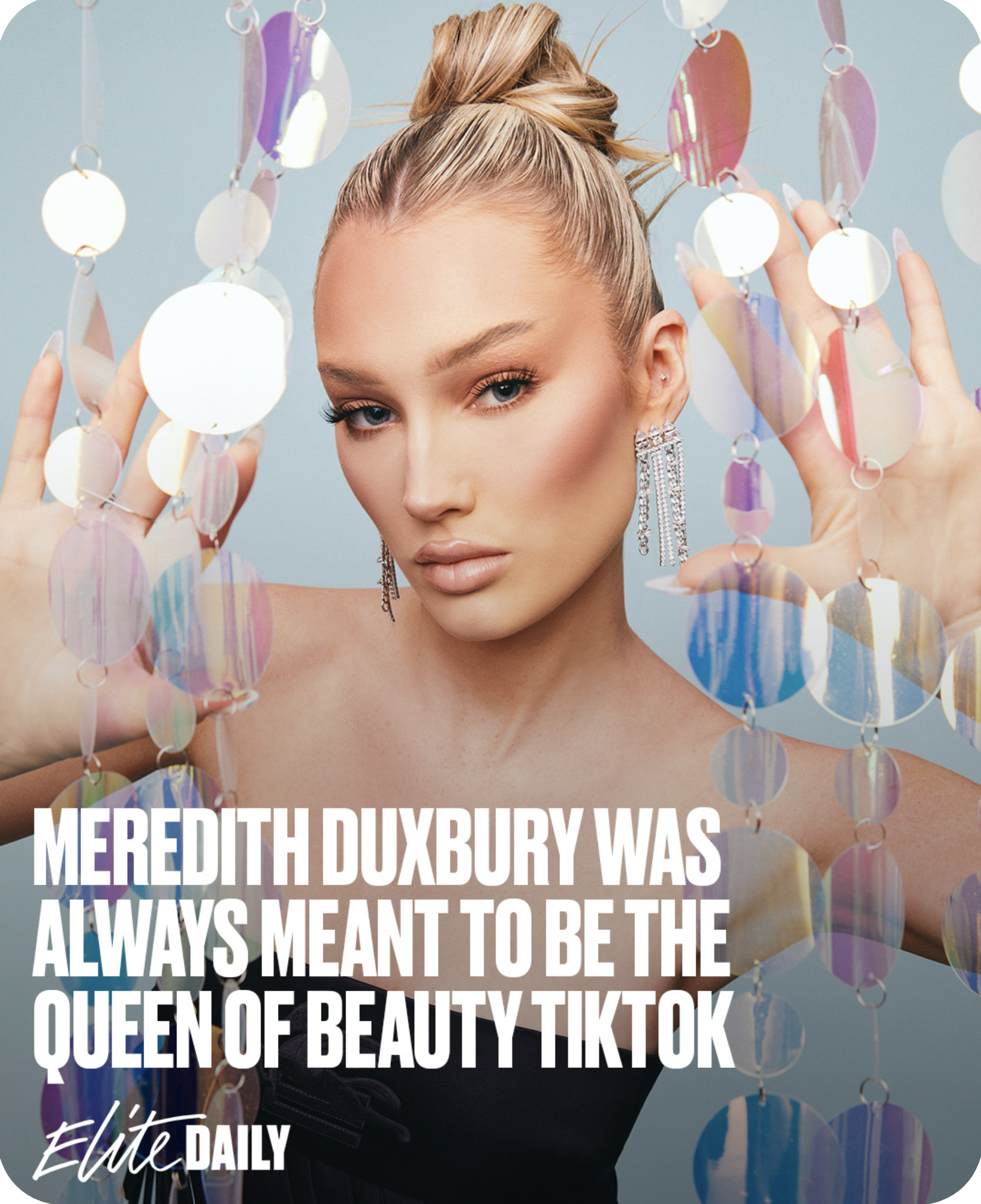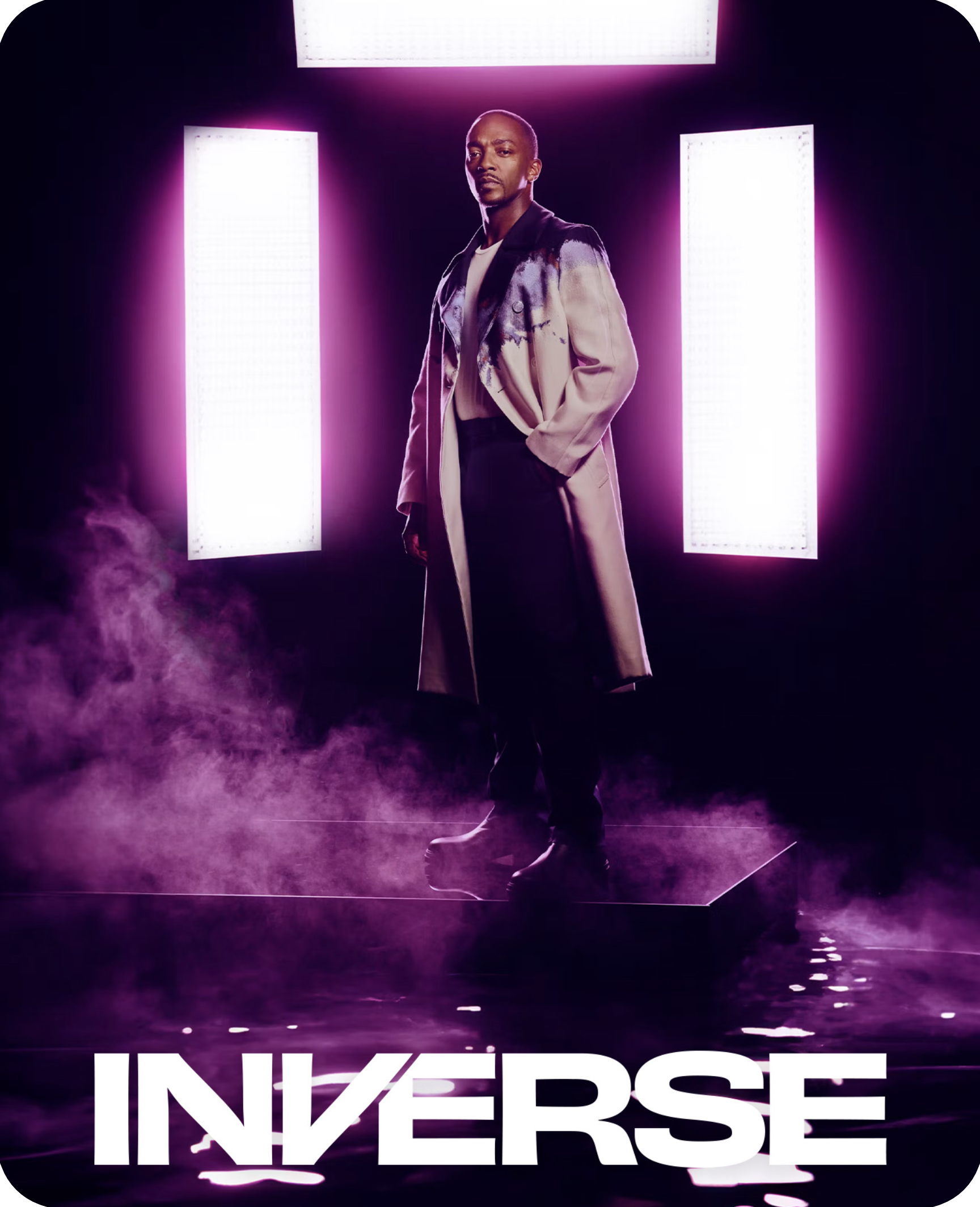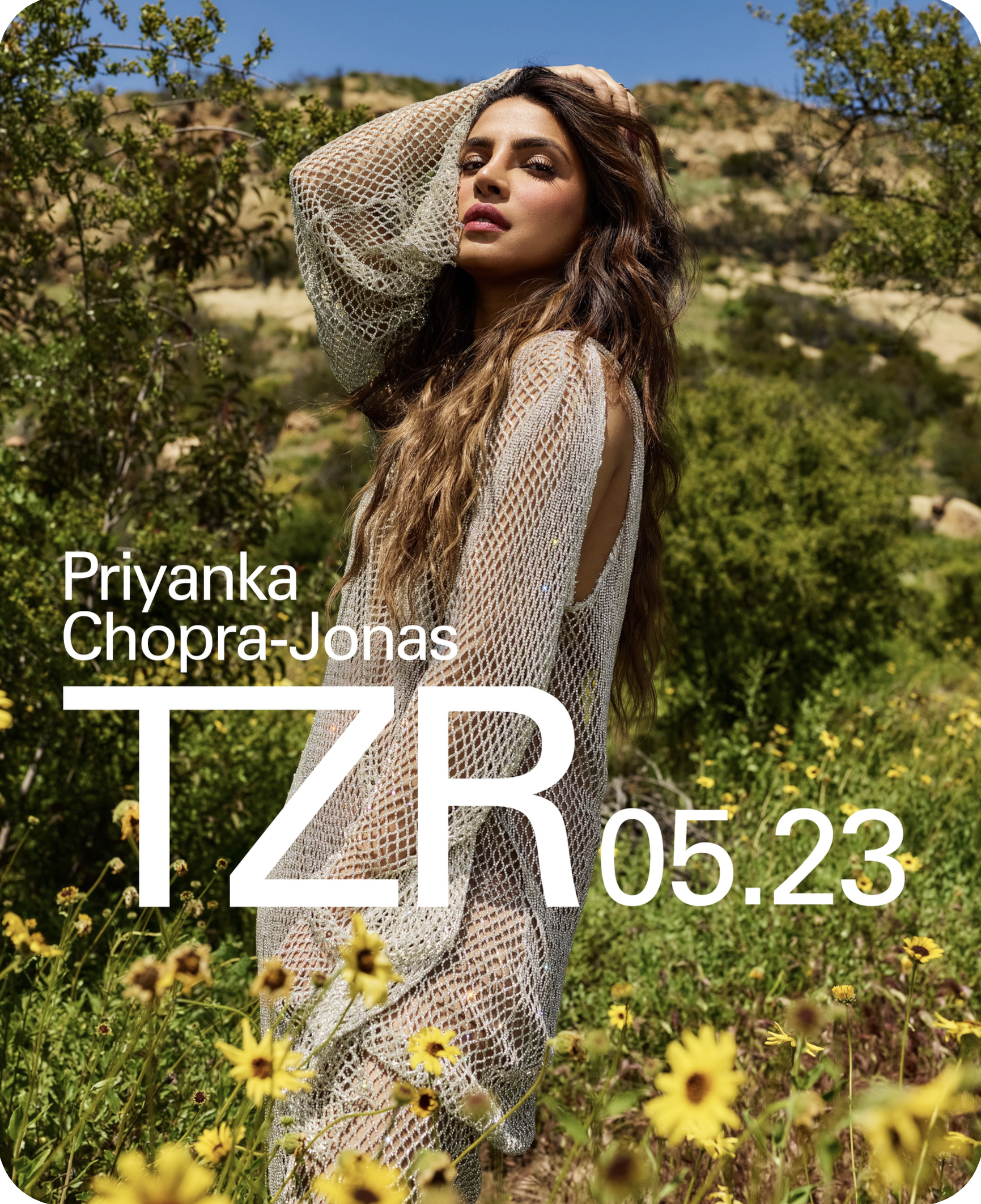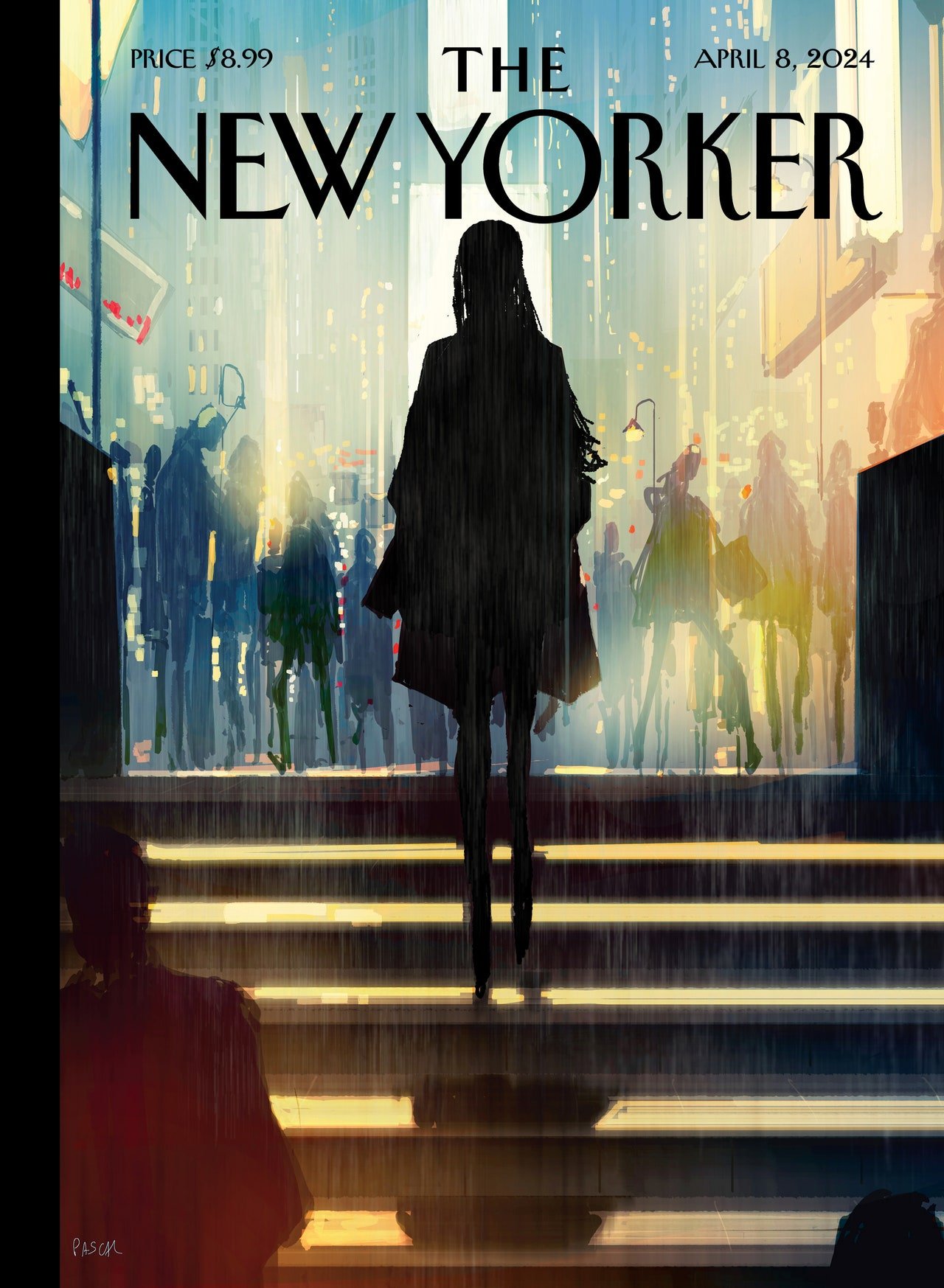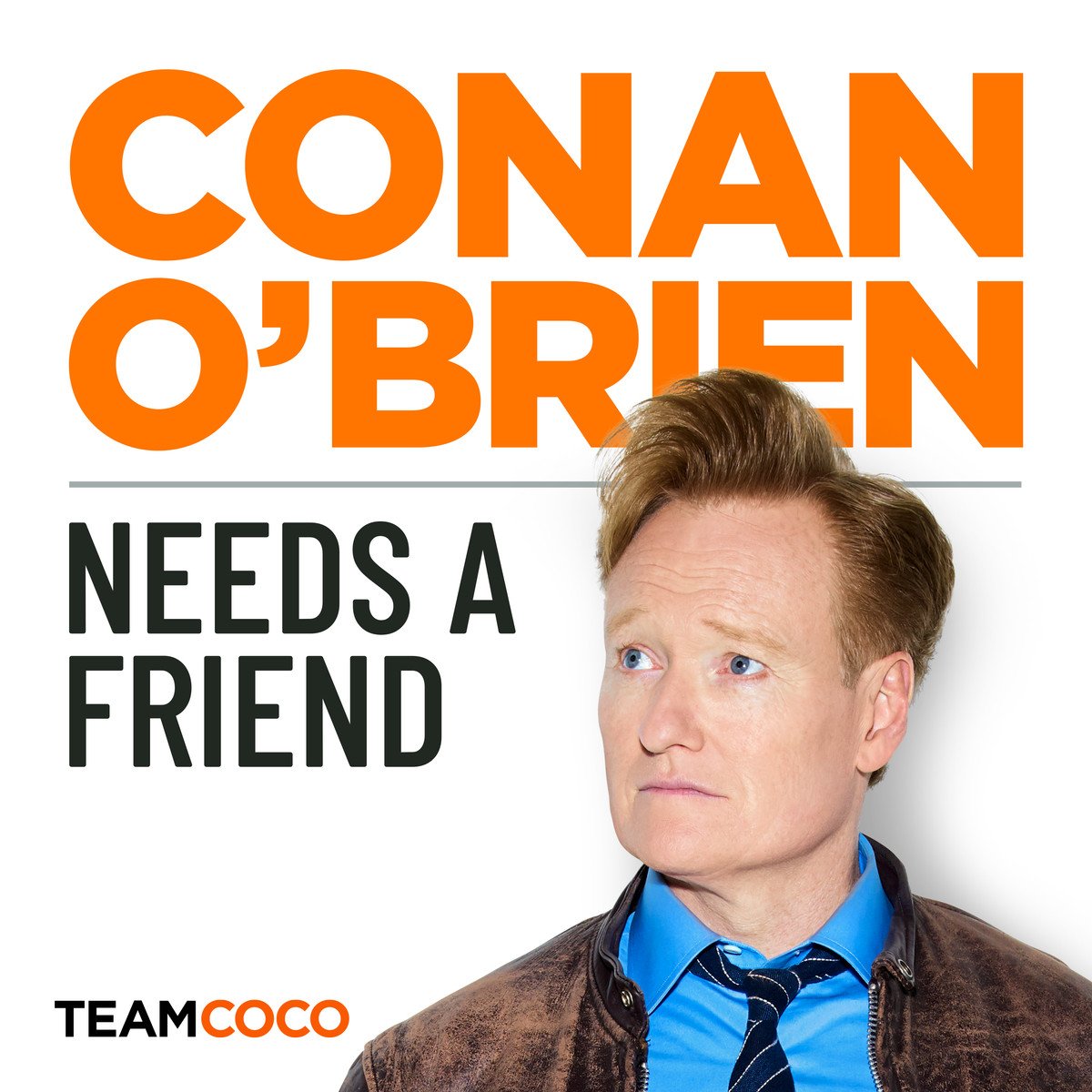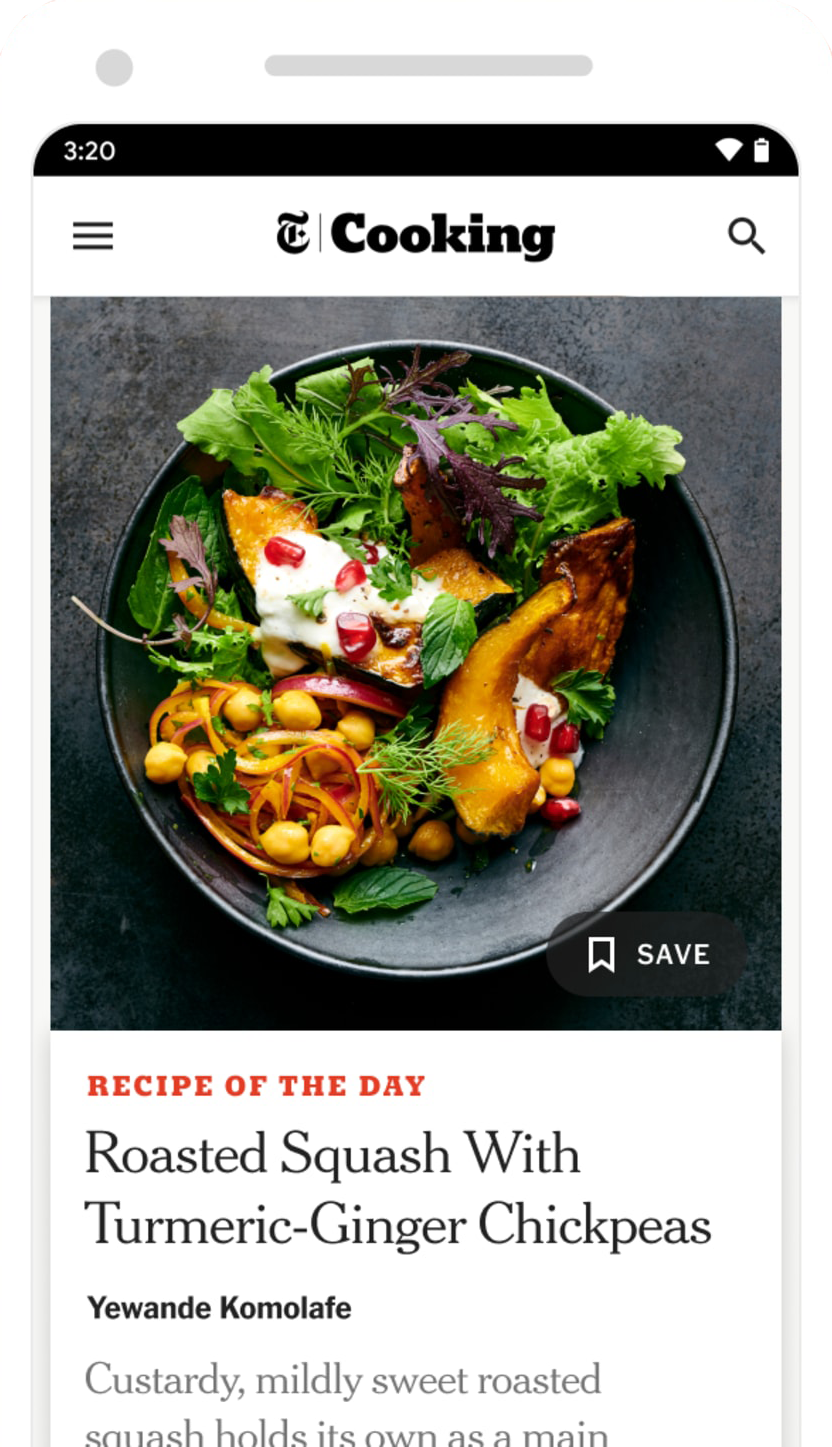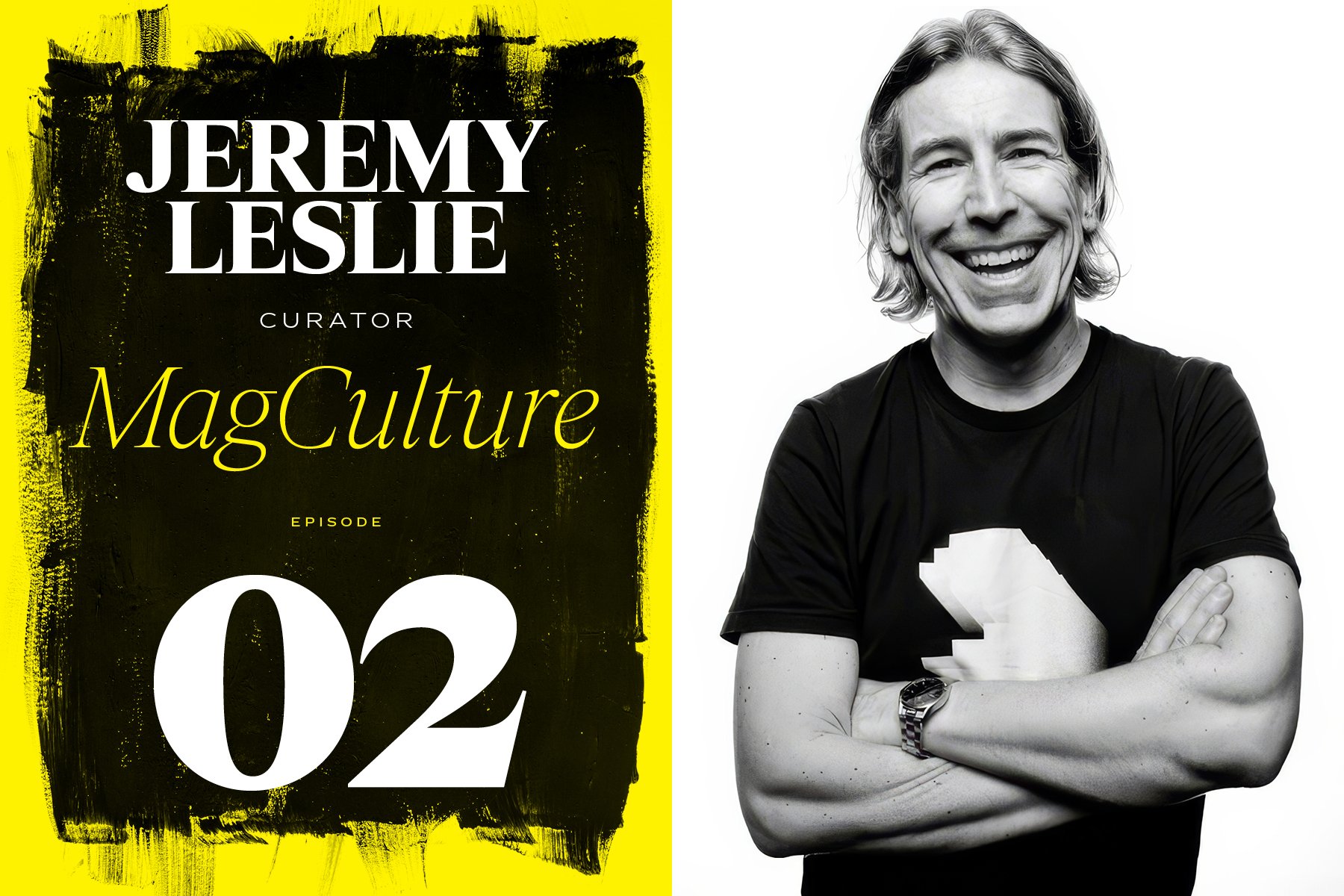Everything Old Is New Again
A conversation with Bustle chief content officer Emma Rosenblum
—
THIS EPISODE IS MADE POSSIBLE BY OUR FRIENDS AT LANE PRESS
Emma Rosenblum is a best-selling author and is about to release a new novel. But that’s not why she’s here.
As the chief content officer at Bustle Digital Group, overseeing content and strategy for titles like Bustle, Elite Daily, and Nylon, she has witnessed some, if not all, of the massive shifts and changes in the media business. The ups and downs and highs and lows, as it were.
Emma’s media past includes stints at New York magazine, where she began her career, Glamour, Bloomberg Businessweek, Bloomberg Pursuits, where she served as editorial director, and Elle, where she was executive editor.
Meaning she’s a good person to talk to about the state of media today, a world where the change never stops. And she also has an insider’s opinion about the legacy big publishers and the advantages that BDG, as a digital-first operation, might have over them.
And did we mention she’s an author? Her first novel, Bad Summer People, was a national bestseller and her second novel, Very Bad Company, will be released in the coming weeks.
BDG published its first print edition of Nylon in April.
“We are as efficient as possible in an industry that is notorious for inefficiencies, and we’re lean and we’re scrappy. That has allowed us to survive and create great stuff in this era where it’s harder to break through as traffic continues to decline for every site.”
Arjun Basu: Tell us about your journey to this point. Your CV is long and it’s been through all sorts of things, and we won’t even get into your writing career just yet. So how did you get to where you are now,
Emma Rosenbloom: I have been in media my whole career. And now I am 96 years old. So that’s a long time. No, I’m not 96, middle age, young middle age. And I started right out of college. I got an internship at New York magazine. And this was in 2003, right at the time when Adam Moss took over New York and revitalized the magazine there.
And I was there for about eight years, which was just the greatest time to be at any magazine at any point in history. The crew there was just all geniuses. And all I did was learn and absorb and figure out how to become an editor and a writer and also how to marry stories with visuals because Jody Quon was the photo director there and still is. And is a genius also.
So that was a very good base to go into media. And it led me to go after that to Glamour. I went to Condé Nast for a couple of years. I wanted to try out women’s magazines. And that was a fun experience, moving to a monthly. It was a high time at Condé. And after that I went to Bloomberg to BusinessWeek magazine.
I wanted to go back to weeklies. I felt like I was craving harder features. I spent five years there, and then I decided to go back to women’s magazines, to Elle magazine at Hearst. And I was there for two years with the editor, who’s still the editor now, Nina Garcia. I was the executive editor.
And then I was recruited to Bustle Digital Group, five years ago at this point, to run at that time it was, I think, four sites we had. At a certain point it ballooned up to about 12, maybe three years ago, and now we’re back to a healthy, eight-and-a-half-slash-nine brands.
And I’m the chief content officer here, so I run our editorial team, our fashion team, our beauty teams, our operations for the editorial side. And I’m part of our C-suite. So I'm working with our executives across the board on company strategy and with our revenue side to figure out how to make money doing what we do. So that’s how I’ve landed right here.
Arjun Basu: So I’m going to ask you about your job, as it is now. How does that work in terms of editorial and content policy, are the different media brands silos, what’s shared is it a front-end/back-end kind of thing? What’s a typical day like for you—and I know there probably isn’t a typical day?
Emma Rosenbloom: There isn’t a typical day, which is why I like my job, but we have come to, I think, a very efficient division of workload amongst our teams. Each brand does have its own editorial team, in terms of the actual editors that are creating the content that go up on the site every day. And they work with freelancers and writers to figure all of that out. And each site obviously is different in terms of the amount of stuff that they’re putting up every single day.
Then our creative team and our fashion team and beauty are hubbed. So each of those teams has people that work across a number of sites. So that’s creating original artwork for stories on our sites, doing all the photo shoots for stories on our sites, and the fashion that goes with the photo shoots.
And so we are as efficient as possible in an industry that is just notorious for inefficiencies, and we’re lean and we’re scrappy. And I think that has allowed us to survive and create great stuff in this era where budgets are decreasing and it’s harder to break through on the internet as traffic just continues to decline digitally for every single site.
Arjun Basu: Yeah, so BDG is one of those groupings, those media companies that feels like it has been at the center of a lot of changes, like if you wanted a case study for media in the aughts and now in the teens and the twenties, BDG would be a great case study. All the highs and the lows of the changes that have been going on. So is it like being in the center of a maelstrom, or because you're in an executive position, do you shield your teams from, or as much as you can from that reality?
Emma Rosenbloom: You do as much as you can. It’s impossible just because our industry changes so fast now. When I started and before that there were probably 20 years of growth and stability in media. And since then, in the past 10 years, it’s just been all over the place.
I like working at a company like BDG. I like change. I like when stuff is up and down. I like the excitement of it. That’s why I got into media. I didn’t want to be a lawyer. I didn’t want to just do the same thing every single day. So to me, the challenges that we face and how we do pivot and how do we continue to survive is part of the excitement of my job.
The company is now 10 years old. I joined five years into the company’s life. The initial strategy of the company was scale—women’s, lifestyle, digital, journalism—but scale, grow traffic. And they were very successful at that. They figured out how to do it. They figured out search.
It was a different time on the internet at that point. But our CEO, Brian Goldberg, what I have always liked working with Brian is for a number of reasons, but also because he does have vision of where things are going. And even if they’re not always a hundred percent, he sticks to his guns.
And when I came on, he recruited me because I had a strong features background in magazines. I worked at Bloomberg for five years. I was not coming from a background where traffic was important or key. It was about telling the story. It was about, What does everything look like? Is it premium? Does it read like it’s professional? And they didn’t have that at the company. And he said, “I’m hiring you to do that.”
So it’s not going to be tomorrow. We’re going to see this slow change. He believed that the internet was going to shift so that it was going to be quality over quantity, that Google is never to be trusted, that we can’t base our business on an algorithm that we have no control over. So we have to build brands that have longevity, that we can build events around, that we could possibly do print.
And I was like, “All right. It sounds as good as anything. I don’t know, Elle’s just going to continue to decline in revenue, so I might as well try this other thing.” And that mission to me sounded like, not like I was stepping into a job where the goal was going to be to just get as many clicks as possible.
The goal was going to be to create environments that looked good and that people wanted to visit, not just on a dotcom because Brian didn’t really just believe that brands could be dotcoms. And I agree with him, and I have always agreed with him. And we’ve seen that play out and it’s actually exactly what happened.
And I think early on, as a digital media company, leaning into shifting our brands more towards the legacy model of actual strong brands that people like, and return to, and see A-list celebrities in photo shoots that can’t be replicated elsewhere. There’s only a few companies now in the ecosphere that, first of all, survived.
There’s Hearst, there’s Dotdash Meredith, there’s Condé. Those are the ones that are still alive and have brands that can attract A-list celebrities. And we’re like in there now, which is crazy to think about where Bustle started from, which was basically just let’s flood the internet with kind of junk content that we can get programmatic ad revenue.
So we’ve spent these past five years transforming the editorial piece into a semblance of what the legacy media companies have, which is quality editorial, amazing photo shoots, beautiful looking sites. And then this print piece, which we’re going to talk about, this Nylon print piece is the last piece of the puzzle that we’re adding on.
We’ve reverse engineered it. The other companies have been doing the opposite, right? They’re decreasing their print and trying to figure out how to make their digital good. We’ve made our digital good. And now we feel like we can make print. In smaller ways, but it’s not gonna put us out of business. It’s not like something that we’re going to have to then scale back.
So that’s the strategy of where we are. And again, it has been a case study for digital media over the past 10 years. It’s been really fascinating.
Selected pages from the new issue of Nylon.
“It’s basically elder millennials at this point who are super into Nylon, but it’s very much a product for Gen Z. It’s cool. They love this idea of being able to touch something. It’s so novel to them.”
Arjun Basu: Yeah, media in general. So, we will get to Nylon, of course, but what is the tension between quantity and quality at a company like yours?
Emma Rosenbloom: You always have to have a base layer, right? In digital media, you can’t be a magazine. We were talking about before we started recording the kind of slow pace of what making a magazine used to be where everything was labored over for hours and days, and we don’t have the luxury of doing that as a digital media brand. You have to have stories up every single day or Google will not recognize you as a site to direct traffic to. So you have to have a certain amount of content. So that is what we think of as the base layer.
We used to have a lot more stories go up every single day that would be created specifically for search traffic. So SEO stories. We’ve decreased the amount of those because obviously we weren’t getting the same return on them, but also this idea that it is literally impossible to put up 80 stories a day on a brand and have them be good. It’s impossible.
There’s not enough editors in the world who’d be able to do that. And you’d inevitably get tons of stories where you’re like, Why are there so many typos in this? Who wrote this? Like a high school student? But that’s what digital media was because there weren’t enough people to do it. The quality just tanked.
So we are very much focused on having the base layer be fine and be good and be professionally edited. And then on top of that, we build our “Moment Journalism,” where we have amazing packages by our editors, depending on the site, what they are. We have beauty awards. We have zeitgeisty essay packages on Bustle about what your life online is like as a millennial. We hire freelance writers to do reported stories—we’re not hard hitting news—but that are making news and being shared. Our goal is always to have our stories be shared.
So those are the, sort of, cherries on top that we’re also doing—not every single day. And Brian likes to tell this anecdote that in the old days, when you thought of what’s the best media company in the world, you’d say, “It’s Disney,” right? Think about how successful Disney is. And now, when people ask him, “What’s the best media company in the world?” He says, “The NFL.” Because he says the NFL has figured out that you don’t have to own every single night of the week. They are just going to own a certain amount of Sundays a year, and make those the biggest events, the best events that they can be, and make the most money that they can. And that’s it. And then you’re out.
So this idea of Moment Journalism on top of this, sort of, base layer is what we go for when we’re thinking of, Okay, Bustle is going to have 12 big stories a year. How do we get those out? How do we make them the best that we can make them? What kind of money are we spending on those?
And then leave the rest to the kind of base layer that’s going up every day. That’s the model that we go for now. And we’ve figured out that this is the way forward. But it’s taken us a while to get there. I don’t think everyone else is there. So don’t steal my secrets if you’re listening to this. That’s what we do.
Arjun Basu: Magazine people listen to this more than anyone else, so the secrets are stolen. And so in an editorial calendar, a lot of your brands also have events, obviously, and flywheels for more content and not just print, but video, and audio. Is that part of the calendar? Are those things like, We’re having this party in two months. This is what’s gonna come out of it. Put that in the calendar. Is that part of the matrix?
Emma Rosenbloom: It is. So, for example, around our big Nylon Coachella event—I do think that edit and events are very tied and it’s the content that comes out of the events that then we use to promote our events. So it’s this circle of help that we give them. I will also say that we use that to show our clients the return on their investment. We have sponsors for these events. And the more the content and the pictures from influencers on Instagram get out there the happier our clients are. We can say to them, “You invested this amount of money for an activation at Nylon Coachella event and it got 300 million impressions on Instagram because of the amount of people that were putting it up.”
And I think for them to be able to see that, it’s very gratifying. And then they know that it was money well spent. And also that feeds our sites, and we’re happy to promote all of that across all of our social channels.
So for sure it becomes a kind of content-generation event as well. So it’s hand-in-hand whenever we do them and we do them, we’re increasing the amount of events. But events are a tricky business, too. You can’t do too many of them. They’re low margin. They’re hard to produce, expensive. They take a lot of people. But you can make big money on them. That’s the path that we’re going forward with.
Nylon House at Coachella 2022
Arjun Basu: Okay. So Nylon’s back in print, after seven years. And the interesting thing to me in this issue is that it’s volume one, number one. I was speaking to Kat Craddock from Saveur a few weeks ago, and they just continued their number system. And I and asked her about that, and she said, “We want to emphasize continuity.” And so: 1) How did the decision come about, or why did it come about, to return to print? And 2) to start it over as a brand new thing?
Emma Rosenbloom: We had always planned on bringing Nylon back to print in some way. We’d done a few test runs of special broadsheets that were like newspaper quality where we printed our cover stories across 20 pages, plus a few other stories. And that was for Coachella last year. We had a cover with Anitta, the musician, and everyone just went crazy for it.
And we had always thought, Okay, when we have the time, the staff, and some money, we’re going to try this. We have people on our staff who’ve worked in print. I, obviously, have worked in print. I was like, “Okay, we can do it. It’s going to be a lift. But we just really wanted to.” Brian has always really wanted to. He thinks print is an important thing for the brands to begin to, even moreso, live outside of digital. We don’t like the idea that we’re fully dependent on platforms, Google, Facebook, Instagram. It’s like the idea that we could exist as a business outside of those in any way, we want to jump out. And print is one of those.
It doesn’t matter if Google changed their algorithm. We still have an issue of Nylon that Mark Jacobs can advertise in. But that said, obviously, knowing the cost of print, and the time it takes, and the care, we had to wait until we had enough people on our staff who could do it. And then also until we had some money freed up where we could do it.
And as an investment we needed to create this one, the one that we just created as a proof of concept before we knew that we’d be able to get huge investment from advertisers. And we did get a number of ad pages in this issue, which I was surprised and delighted by it. So the decision behind it was like, “Okay we have a little money, let’s do it.”
And also that it’s the 25th anniversary of the first Nylon. It was also the 25th anniversary of Coachella. And so we felt like that was thematically a nice tie-in so we could have it at our event, which we did.
And then to start it over at issue one, volume one is just because the magazine, physically, is so different it didn’t quite make sense to just continue. And also there was a pretty long break—seven years. It’s under new leadership. That said, if you flip through it, there’s a lot of nods to the old Nylon.
“Hearst, Dotdash Meredith, Condé. Those are the ones that are still alive and have brands that can attract A-list celebrities. And we’re in there now.”
Arjun Basu: I was going to say that it feels like Nylon, like that I had maybe been away from a magazine for seven years and then I picked it up again. I looked at it. I was like, “Oh, yeah, that’s Nylon.” It’s still very downtown. It still feels like Nylon just seven years later with the regular evolution that a media might take.
Emma Rosenbloom: That’s a very nice compliment. And that’s the nicest thing someone could say about it because that’s exactly what we were going for. We obviously did all of our research in terms of going through all the old Nylons. We picked and we picked some franchises that they used to do. We used some of the language that they used in terms of naming sections. We also used old covers in certain areas in the magazine and just felt like there were enough winks and nods to the old product.
It’s a new audience though, too. Like we definitely wanted to have a nostalgia of—it’s basically elder millennials at this point who are super into Nylon, but it’s very much a product for Gen Z. It’s cool. They love this idea of being able to touch something. It’s so novel to them in that they’ve never had that before.
But it’s definitely geared towards that. Not to age myself, but we have this Coachella portfolio in this magazine, which turned out amazing. I had not heard of one these people. I was like, “Who are all these people?” Obviously I know Gwen Stefani. At least I know our cover star, but that’s what we’re going for. We want people who are cutting edge and cool. And that’s what Nylon always was. So that’s what we’ve tried to do.
The oldies like me will be like, “Who?” But I think we did successfully figure out the kind of talent to feature, and also the ways of shooting them that felt modern. Because the photography in this magazine to me also feels very modern. And if you look at the old magazines, it feels very of its time, in a cool way. But if you put those pictures in a magazine now, it would look like a black and white photo from the 1950s appearing, and that was the strategy—just nodding to the past, but looking towards the future.
Arjun Basu: I was looking through your Instagram and you have that photo of you and the editors looking at the pages on the wall. I was just overcome with such nostalgia at that point. I still love that moment where the art director would come and just start putting pages up. It just looked like, that’s where it happens. That’s the magic where you see if you have a book or not.
Emma Rosenbloom: Totally. And you know what, when we first put up the wall, I was like, “This is a failure. This is like the least coherent magazine I’ve ever seen in my life.” So we made a lot of changes. Our creative director, Karen Hibbert, worked at Condé for a long time, and I thought she would be upset when I was like, “Oh shit, we have to redo all this stuff.” But she was like, “No, you’re right. We’ve got to go back to the drawing board.” Because the sections weren’t working together. It just wasn’t right yet.
But that’s the fun of making a magazine. It’s like an art project married with words. And that’s what we all learned when we were young. And it’s what we love doing.And I had so much fun doing that. And I also had nostalgia standing at the wall and thinking, “Oh man, it was so good back in the old days. We just got to stand here with our arms crossed and….”
Arjun Basu: Exactly! Random pointing … and we called it a “book” for a reason. It had to cohere.
Emma Rosenbloom: Totally.
Arjun Basu: So you’re doing two a year. Is that the plan?
Emma Rosenbloom:This year we’re doing two. We shall see about next year. Brian’s dream is to go up to four. I don’t think we would go beyond that. It doesn’t make financial sense. So we’ll see about advertiser interests. We already have a lot for the second issue. And we knew that was going to happen because as soon as you have a physical product to give to people they want in. But it’s an expensive endeavor. And my hope is always that we don’t overcommit ourselves.
I’m also looking at the budgets and looking at the revenue that we’re taking in. And you need to be sober and not be like, “Magazines! Weee!” Because I also know how much it costs to do a cover shoot, and I know how much it costs to print it, and to hire freelancers—because we don’t actually have a real staff. All those things cost money and I don’t want us to get to a point where we have to scale back.
I would rather just be, like, really humming and having an amazing two times a year product than get ourselves into trouble with four. Though Brian’s never been one to hold back. So we’ll see what happens next year.
Arjun Basu: Speaking of Brian, I read an interview where he’s talking about the pivot to luxury, as a way to accommodate, or maybe even circumvent, media changes. And certainly luxury and beauty is a sector that knows how to spend properly and has never eschewed print. I think they understand—luxury and fashion and beauty—understand the sensual nature of a magazine. And it is a luxurious thing. The cover of Nylon is proof of that. The thought that went into the paper—we talked before we started recording about the low quality of so much of the paper that you get in a magazine store. But then you have those magazines that are coming out two, four times a year. They’re creating objects now, luxury objects. Print is luxurious, and that doesn’t mean it’s inaccessible.
Emma Rosenbloom: I completely agree. And obviously that correlates to the actual advertisers in the magazines we have. Our fashion and beauty business is really strongest for print. And that’s where we think we’ll get all of the traction.
And this idea that print is more of a collectible and it’s something that people will keep around rather than just chuck for the next month, which is what it used to be. I also like to think about and talk about—particularly coming from women’s magazines—how we used to sit around in pitch meetings and think about, Okay, how do we best tell women how to live their lives? What advice can we give? What service packages can we do?
Because that’s where people got advice. It was magazines. And that is obviously not where people get advice from now. They get advice from TikTok. And it’s often wrong, but they get it there anyway. And so completely transitioning away from service in a magazine is freeing, honestly, for someone from my background, where you can be like, “I don’t have to tell anyone anything. I just have to do really beautiful, huge pictures with high-quality profiles. Or stories that are deep dives.” And that’s kind of it.
You don’t need that kind of “bitty” front-of-book. It’s funny, actually, when we started to design the magazine—this was part of the design problem—where when I was conceiving of the front of book, I was like, Okay, service, front-of-book, bitty. It’s like a phantom limb that comes back to you and you’re like, “I know how to do a front-of-book. I edited one for eight years.”
And then we did it in this bigger format. We had a slightly different front of book. And it looked horrible because this is a big, pretty magazine. And when you try to do like bitty infographics, like, it looks not right. And so we were, like, “Nope. Goodbye. Scratch that.”
And so that was an interesting exercise in the magazines of 2024 versus the magazines of 15 years ago, 20 years ago, and how different they are. So it was a learning experience for me as well, even as someone who’d been doing it for so long, which was great.
Arjun Basu: So that’s interesting, because I was going to ask about, beyond the obvious reasons, how social—and especially the influencer economy—has changed everything. But change at a magazine must have been one of the realizations when you were creating the print of Nylon, for example. There’s a whole group of people who are doing exactly what a front-of-book, or even a back-of-book would do on a regular basis. Why try?
Emma Rosenbloom: And you know what, don’t try because the reader’s not gonna connect with that. They don’t need that. We used to do these, how do you do day-to-night dressing? That’s not something that you need to do in a magazine anymore. We do have trend pages, but they’re very visual. They’re not explaining anything. They’re not telling you how to get dressed. It’s just runway pictures because it’s a nice way to break up the big pictures. But, yes, it was a very interesting new way of thinking about what print means. And like anything, it’s changed, but in a way that’s cool, I think. And in a way that can make the magazine look even more beautiful and also more attractive to advertisers.
“It is literally impossible to put up 80 stories a day [per] brand and have them be good. It’s impossible. There’s not enough editors in the world who’d be able to do that.”
Arjun Basu: And your target audience is not the target audience it was even seven years ago.
Emma Rosenbloom: No. Not at all.
Arjun Basu: They’ve just grown up in a completely different reality.
Emma Rosenbloom: They have not even ever bought a magazine. They don’t have any magazine subscriptions. You get a copy of Vanity Fair and you’re like, “Why?” Okay. These are the people that are again thinking about it as a product that they can hold up on Instagram and take a picture with and be like, “Look what I got!”
In a way it reminds me of how people think about books now and how they can be a way to disconnect, first of all, from their digital lives. And it’s also a status symbolizer where people are posting their books on Instagram because they’re like, “I’m not just about Instagram. I also read books.” And I think magazines can be in that same world. And that’s how we’re seeing people interacting with them.
I don’t know if people are reading it. They’re definitely posting it. So that’s good, right? I think they’re flipping through.
Arjun Basu: Absolutely. That’s the currency now. That gets to my next question, which is about the future of media. It’s a big question, but someone like you or someone within BDG seems like a good person to think about that and answer it because you probably have answered it—or at least thought about it. So what do you think is down the road?
Emma Rosenbloom: It’s definitely a question we think about every day when we are having our executive meetings and looking at our revenue and thinking about ways to continue as a company and be profitable. I see the trend away from scale. I don’t think we’re ever going back there. I think that’s done.
I see a world where we will continue to shed some brands across the bigger legacy companies until they’re smaller, those companies. I don’t think the world that can continue to support all the brands that exist.I still see that like that there’s going to be attrition there. And I think the biggies will survive.
And I think the biggies will survive in a way that we hope our biggies survive, which is this mix of digital, and print, and events. And I think it’s going to be a smaller industry going forward, but it can still be super-profitable for the companies that can make it profitable.
People will always need—I hate the word content—but they need it. And also we still seem to provide a space for regular people to connect with things that they can’t get into, people they can’t meet, celebrities that they’re never going to see in real life. There is still no other conduit. We thought, and you know what, I probably was guilty of this too, that Instagram was going to replace media for celebrities. They have their own Instagrams. Why do they need a magazine? Guess what? They all still want to be in magazines.
And this is 10 years later. This is not just, like, yesterday. Beyonce has 300 million followers on Instagram. She was just on the cover of W magazine. We own W. They still need us. So that’s not going away. And that is super valuable and will continue to be. There seems to just be this symbiotic relationship between culture, and exclusivity, and media. And I think that’s how we’re going to continue to make money.
Our events, it’s the same thing. Only a certain number of people can go to these events, even though they’re broadcast all over Instagram. You can’t go to our Coachella event unless you’re invited to our Coachella event. You can’t really put a price on that. And I think that’s the way forward.
And that’s why a brand like Vogue will always exist. That’s why GQ will probably continue to exist. I don’t know about Hearst, but there are a couple of brands there that will continue to exist. And the rest might just go by the wayside. Now, granted, they might find their like sort of niche way forward dependent on the company, but that’s how I see it going. And that’s why I think we should double down on our brands that we can monetize in that way.
Arjun Basu: We talked about books. I really thought that everyone would have an e-reader and would be reading eBooks. We wouldn’t be carrying books anymore. And that’s totally not the case. E-readers have plateaued. Audiobooks are coming up, but people still want books. They carry them. And again, they’re objects, they’re things. But they’re just things that people have that have meaning. And I think print is still special. I think we’re going to see brands that abandoned the platform come back like you’ve done with Nylon. So what about the other Nylon brands then?
Emma Rosenbloom: Oh, you mean the Nylon France and Nylon Japan? Our international brands? Nylon Guys? We only own the US Nylon. It’s licensed out internationally. We have a relationship with them, obviously. And we share content occasionally. I think it would be great if we actually had a collaboration, particularly with Nylon France. They have real brand equity, and France is obviously where all the luxury advertisers are, and they know and love Nylon there.
We, possibly, will bring back Nylon Guys. We own the IP, we own the Instagram channel. With all of those there’s potential there. We already have it as a franchise on digital, we’re going to shoot a specific Nylon Guys feature for the next issue because I just love it. I think that it’d be so fun to have its own little space. So that’s what’s happening there.
Nylon Japan is quite a success. We did a little shoot with them, we shot a Japanese band and we worked with them on that for this issue. It’ll be interesting to see how we can collaborate more with them, particularly now as we’re in print. And I would like to continue doing so. It wasn’t top priority before this, but now we have the actual impetus to be like, “Alright, guys let’s do this together.” So we’ll see.
“Beyoncé has 300 million followers on Instagram! She was just on the cover of W magazine. Celebrities still need us.”
Arjun Basu: So beyond chief content officer, which sounds like a very big job. You have two other jobs: You’re a mother and you’re also a novelist. And you have a book coming out. And when I was in magazines—I’m also a writer—I got this question all the time: When do you write? And I hated that question. So I’m going to ask you.
Emma Rosenbloom: Yes, my second book is coming out next month. I have a third book that I’m currently writing. And the answer is for the third book, I’m not. I don’t have that much time. I’m behind because this job has been very busy lately, which is great, but also it’s not allowing me time to do my side gig as a novelist.
When I started writing my first book, it was the height of work-from-home, pandemic-y time. And I found that being just on Zooms all day long was really draining, and I hated it. And I felt like I wasn’t doing anything creative and I’d just be exhausted after the day and felt just like I’d accomplished nothing.
I started in between Zoom meetings with those 15 minute-odd breaks that I would have, just seeing if I could write fiction. I didn’t think I had the bandwidth to write a nonfiction book because that’s actual work, and fiction is just making stuff up. And after a chapter, I was like, “Huh, I’ll just keep going.”
And I just kept going. And I’m a pretty fast writer. I was trained at New York magazine, you just had to bang stuff out. And I think sometimes people who are writing fiction get too wrapped up in going back and trying to change stuff before they plow forward. And I had very much been taught to just get the draft done and then you can send it to an editor and then you can make it better.
And that was exactly how I always had done stuff. So it wasn’t hard for me. I was, like, “Alright, if I have to get to 83,000 words, I’ll get to 83,000 words.” It was just like over a course of a few months. And then, not really thinking that anything would come of it, but being like maybe I can make 50 bucks on the side or something who knows?
And then it sold. And it did well. And now I have this other book coming out. So it’s been a delightful surprise in my career and a twist that I didn’t necessarily think would happen. But it’s super fun and it uses a very different side of my brain, which I like.
Arjun Basu: That’s what I was going to ask you about, because when I was editing. I found I was using the same side of my brain, but when I was more in the executive planning, strategy roles, I found that I could write more because I wasn’t using the same part. I wasn’t mentally exhausted in the same way as I was when I was editing.
Emma Rosenbloom: It’s totally true, yeah. My job is managerial. I’m just making decisions and telling people what to do, basically. I remember I had this funny conversation with Joanna Coles, who was the chief content officer at Hearst, where she said, “You think that your job’s going to be harder as you go up.” She was like, “It’s actually much easier. You just tell them what to do.”
Arjun Basu: That’s the secret.
Emma Rosenbloom: It’s not real work. To me as a writer and as an editor, the real work is always sitting down with a blank page and you’re like, “Oh God, help me. Here we go.” But my job is not like that. It’s just people asking me questions and me saying, “Yay. Nay.” I don’t know. It’s a little bit more complicated than that, but in a nutshell what it is.
So, yes, this writing is a completely different thing. And it’s hard in certain ways, like, I don’t know what to do with a plot. That’s not my main skill. But I can write characters because I had always written profiles. And I can write dialogue. And I know what a kicker is. Once you start writing fiction, it’s all just like the end of a chapter, it’s like a kicker. And there’s beginning and middle and end.
And you know that from your training as a magazine person, but it’s so different. And so I’m able to do both for now. We’ll see what happens with my third book. I’m at a little bit of an impasse. I hope my editor doesn’t listen to this.
Arjun Basu: We’ll be sure to send them the link. So we always end these things with three magazines or media that you’re really enjoying right now.
Emma Rosenbloom: Okay. I’m always going to say The New Yorker, which is just such a boring answer, but it is the one place where at least when I dive into any article, it is always better than I think it’s going to be. I think it’s going to be boring. And then I end up reading it and learning so much and then boring my husband to death on a car ride where I’m like “I read this article in The New Yorker, let me tell you all about it.” And two hours later, he’s like, “Can you stop telling me facts from this article from The New Yorker?”
It is so well-done, and well-edited, and well-written, and will continue to be, hopefully forever, because at least we have to have one place in our industry where it’s just the shining star of quality writing, and editing, and storytelling. And also so much unexpected humor in that magazine. It’s not boring. So that’s number one.
I always, on my way back from dropping my kids off, I listen to Conan O’Brien Needs a Friend, because the world is a very dark place and I am over The Daily and I can’t listen to it anymore. And that used to be my routine. And then I was like, “I can’t.” So I’ve switched over to Conan and he makes me laugh. And I look like a lunatic, probably, on the Upper East Side.
And then let’s see an unexpected one for number three that I’m always looking at. This is also so boring. This is another thing that is not actual media, but The New York Times Cooking app is so effing genius. And I am so jealous of it as a digital person. Like we don’t have products in that way necessarily. We don’t have standalone apps or anything. But they cracked a code, it’s like a drug-addiction for me, The New York Times Cooking app. And it’s not just the recipes, it’s the storytelling with the recipes. Everything is thought of in such a smart way. So good job, New York Times, on the Cooking app because I open it more than I open Instagram.
Emma Rosenblum: Three Things
For more information, visit BDG online.
More from Magazeum




